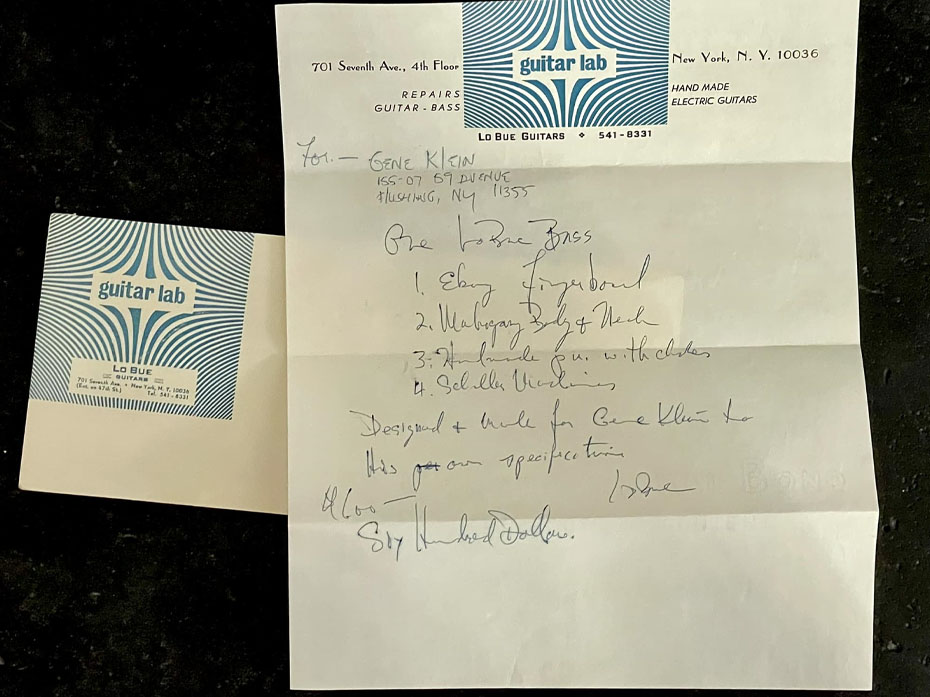
After having used a few different basses during the time in Wicked Lester—an Epiphone that was stolen and a Fender P-bass with a Gibson EB-0 pickup that was sold to Stephen Stills—Gene finally found his weapon of choice in the shape of a Charlie LoBue custom bass. Actually, whether it was actually a custom instrument made for Gene is an issue on which Gene himself seems less than clear. This is something of a recurring theme when Gene talks about his gear, that his stories and recollections has a tendency to change a lot over time, and it makes the history of his basses a little difficult to untangle. "I saw a bass [LoBue] had built hanging on the wall and decided right then that I wanted it. It's only got one pickup with one dial for volume, one for tone; you can either turn it up or down. I love it." (Guitar Player 1978) Much later Gene would remember it a little differently: "So he made me a one of a kind natural wood custom made bass, no name, no nothing." (Metal Edge presents KISS Alive! 1996) Thankfully there has surfaced a handwritten note, written on Guitar Lab stationary, that appears to be the order of this particular bass and it specifically mentions that it is to be built to Gene Klein’s specifications.

Gene almost certainly got this bass in September 1972. In Face The Music Paul mentions that Wicked Lester got their equipment stolen when they had just completed the sessions for the unreleased album and in KISStory there is a receipt that is most probably from when Paul bought his LoBue Doublecut. Unfortunately the only part of the date that shows is the month and date, not the year, but the month tells us that it isn’t the receipt from when Paul bought his later LoBue Custom V. Since we can say for sure that Gene’s LoBue custom was on hand for the showcase for Epic in late November, 1972, a September purchase seems likely and that would mean that the order note above probably has to be from July or August 1972. This is the original version of the custom LoBue:
The iconic photo by Lydia Criss from the Epic showcase is the first known appearance of Gene and Paul’s LoBue instruments. This bass went through a lot of changes during the four-and-a-half years it was used on stage and I will give these changes different version “names”. Thus we begin with a rundown of the original look: mkI.
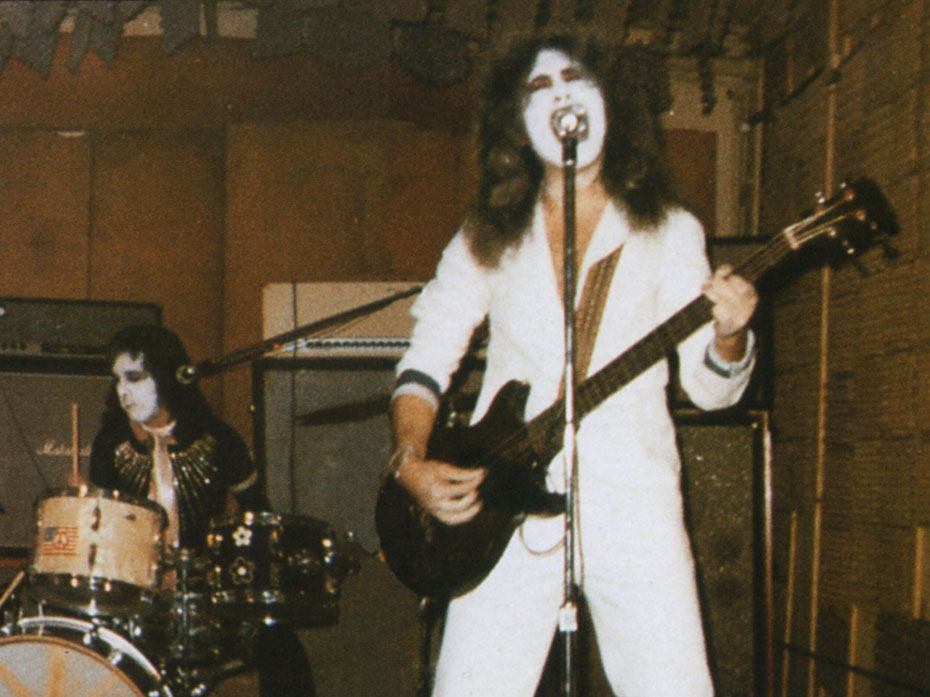
Both Charlie LoBue and Gene favored mahogany and that wood was used for both the body and neck of Gene’s custom. The construction is set-neck and this is where this bass differs most from other LoBue basses. All other set-neck LoBue basses I’ve seen have screws or even a neck plate to help secure the neck, but there’s nothing like that on this bass. There was probably no need for additional support here because the heel on this bass was massive. Even though it had a 24 fret neck, the heel starts all the way up at the 17th fret and the body joins at the 20th fret.
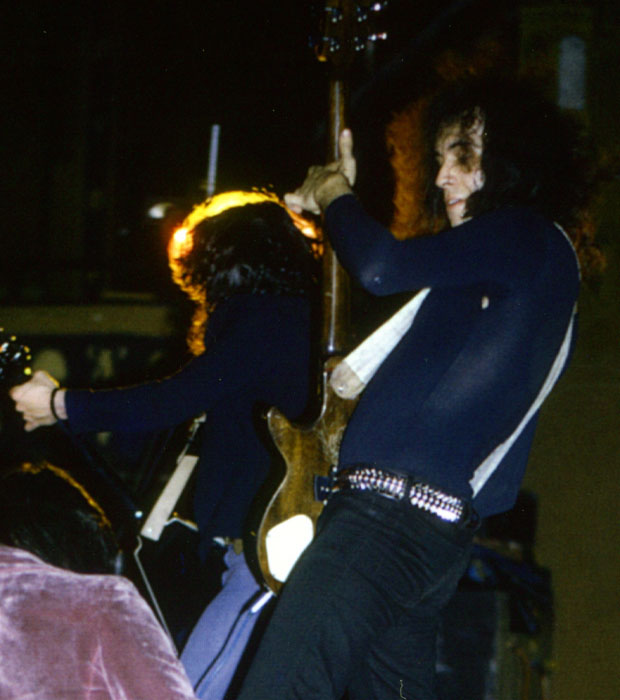
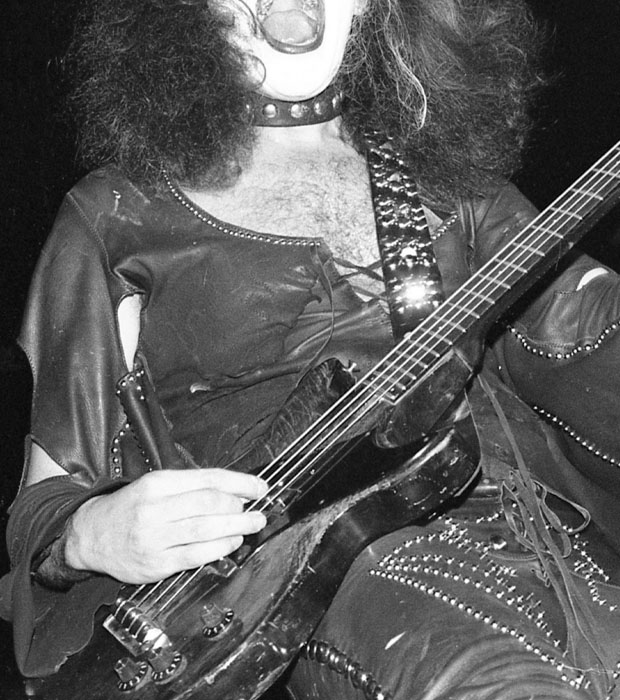
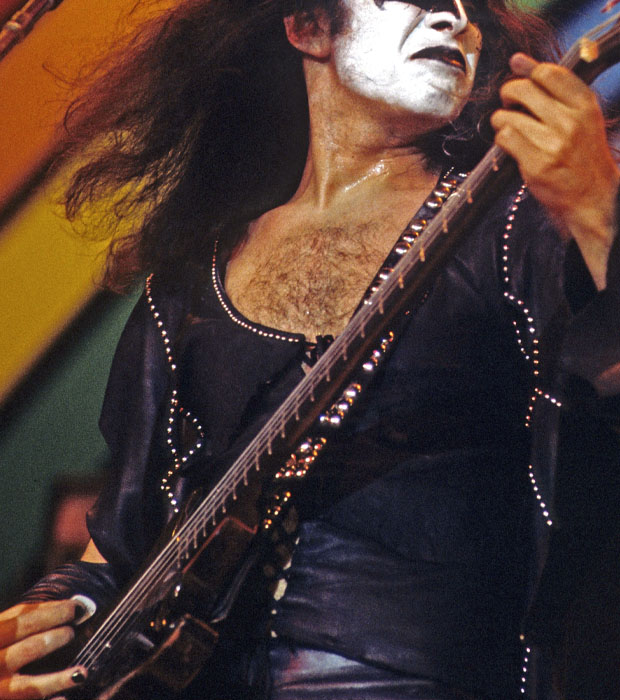
LoBue and several of those he worked with liked ebony fretboard and that’s what Gene ordered. The hue looks a little light at times but other photos show a very dark fretboard so I think it was ebony. The instruments built in LoBue’s shops usually featured bone nuts and we can assume that this bass had one. The fret markers were small white dots whose placement was a little unorthodox. Up to the 12th fret things look fairly normal, but quite unlike most other basses (and guitars) only the 15th, 19th and, 24th fret had markers. The 24th fret is the only one with double dots and these were placed very wide. This is in stark contrast to LoBue’s other work. Sometimes his fretboards only had fret markers up to the 19th fret but I’ve yet to find any other examples of skipping frets that usually have fret markers.
The idiosyncrasies continued for the side markers. They were “regular” up to the 12th fret—which, unlike the marker at the 12th fret on the front, was a double dot—and then there was nothing for the remaining 12 frets.
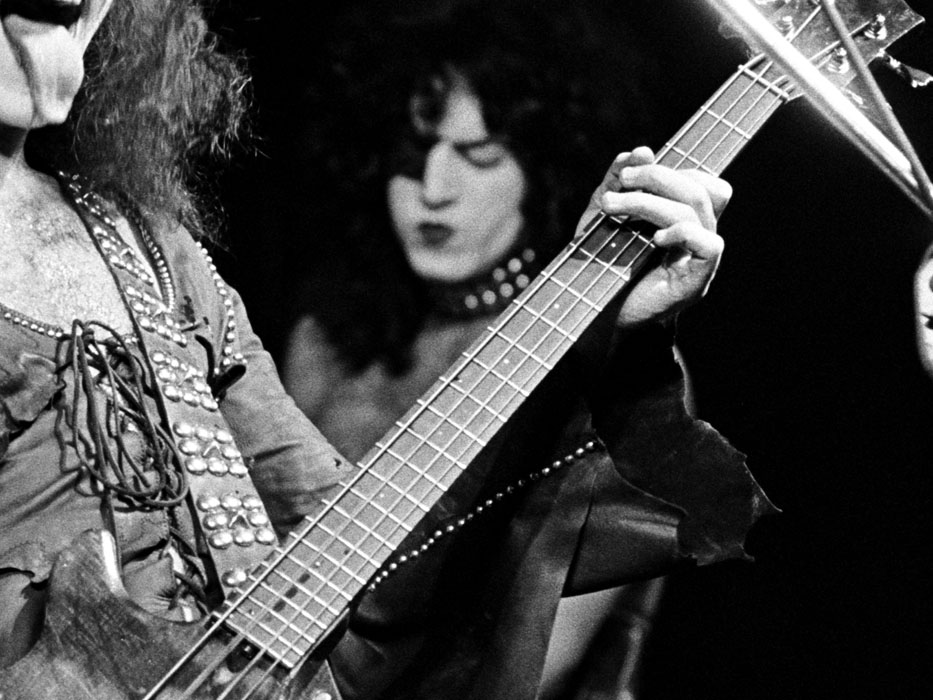
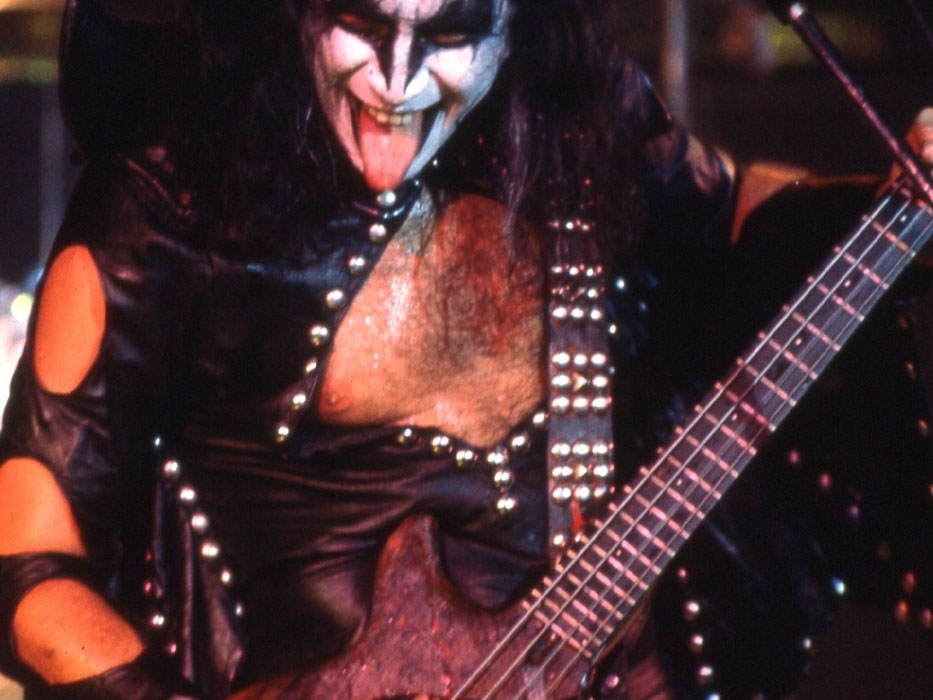
Alas, not everything about this bass has been caught by a camera. A lot of times we can identify guitar or bass tuners simply by the look of the knobs but in this case there’s not enough information to go on. LoBue tended to use Gibson hardware (and pickups) and from the look of the tuning heads on Gene’s custom LoBue it had closed-back M4s. These were made by Schaller in Germany and in this time period (roughly 1970-1972) they could have been one of three different versions. The three versions only differed in the text and/or symbols on the back. One had a stylized Schaller ‘S’, and another had a Gibson ‘G’ instead. Around the time when Gene bought this bass there was also a third version which had the name Gibson written in bas-relief in a semi-circle. (The order note above only specifies Schaller tuners, not which ones.)
Based on the admittedly limited number of LoBue basses I’ve seen photos of, Charlie seems to have liked violin-style rather than adjustable bridges. The bridge on Gene’s custom was a simple mahogany bridge with a bone saddle that was slightly angled and uncompensated. The tailpiece appear to have been Gibson part BR-750N which was used on the first two versions of the Gibson Thunderbird. Interestingly, the body of Gene’s custom had a slight rout around, or possibly just behind, the tailpiece. This rout is pretty hard to spot and even harder to make sense of. I tend to think it was to alter the string angle just a little.
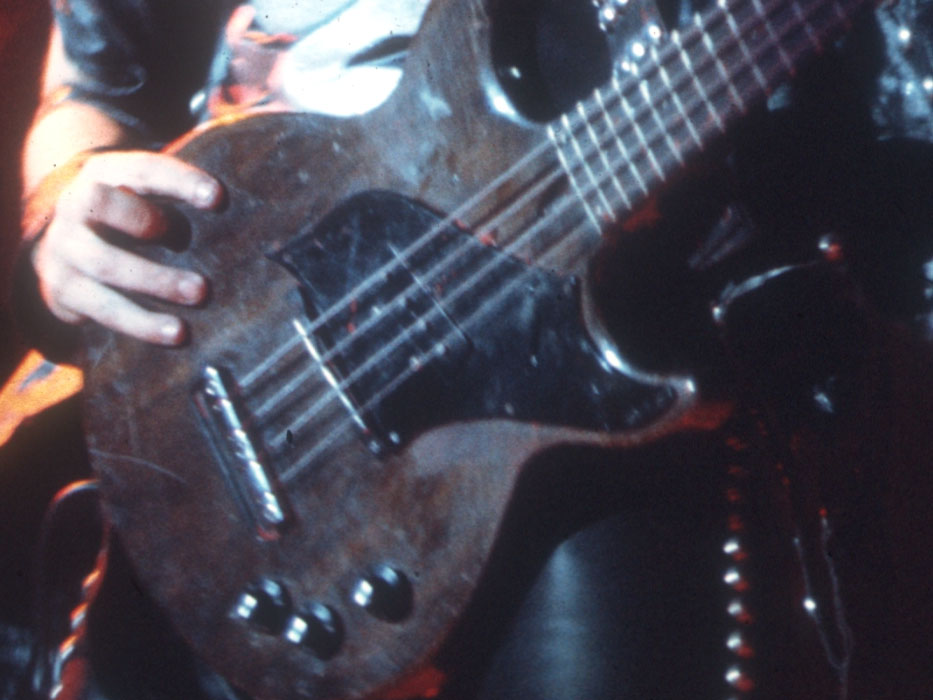
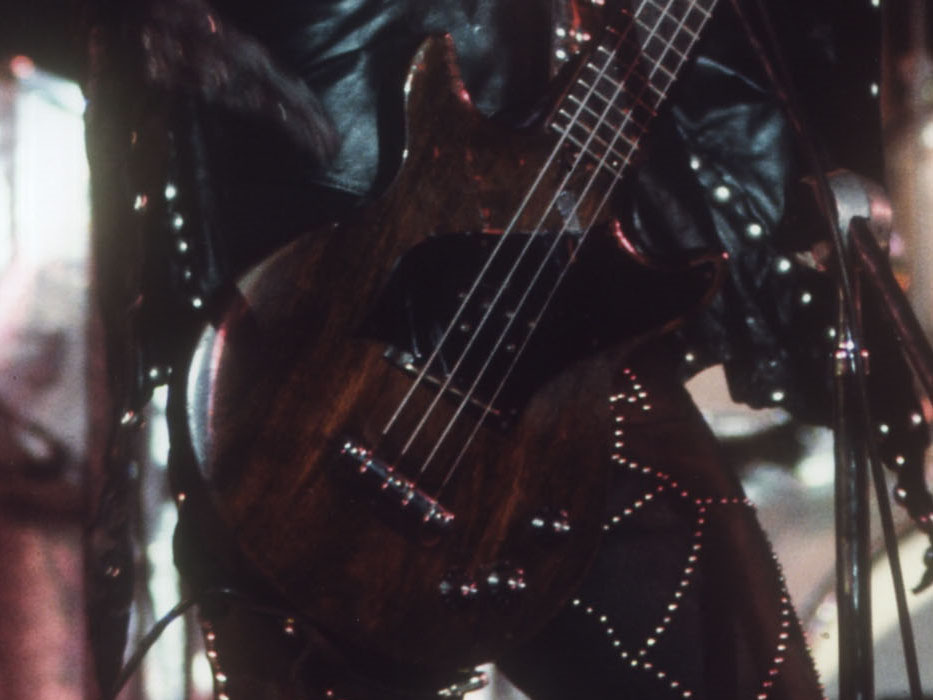
Now, about that pickup… There are no known facts about what this pickup was. When it came to guitars, LoBue initially used Gibson or Guild electronics but I don’t know what he used on basses. The site devoted to LoBue has it listed as a LoBue/Gibson which can mean anything. The order specs say that it was a “handmade p.u. with choke”, something that apparently could be used to create an onboard passive tone circuit with multiple bands (in this case probably two bands). That would explain the slightly odd feature of a single-pickup instrument having three knobs. Gene’s repeated mentions that he went to school with Larry DiMarzio, and the fact that both Ace and Paul tried hand wound DiMarzio pickups early on, has led some to assume that the pickup in Gene’s custom LoBue was also a DiMarzio. It is true that Larry did work for LoBue and, after a while, worked on pickups and electronics, but based on recollections it seems as if DiMarzio came to work with LoBue in 1973 at the 206 Thompson shop so he probably wasn’t involved in the making of this pickup.
Throughout 1973 this was the only bass Gene had. He used for all the club gigs, the showcase at Le Tang's, recording the first album, and—quite naturally—the band's first "professional" outing on New Years Eve.
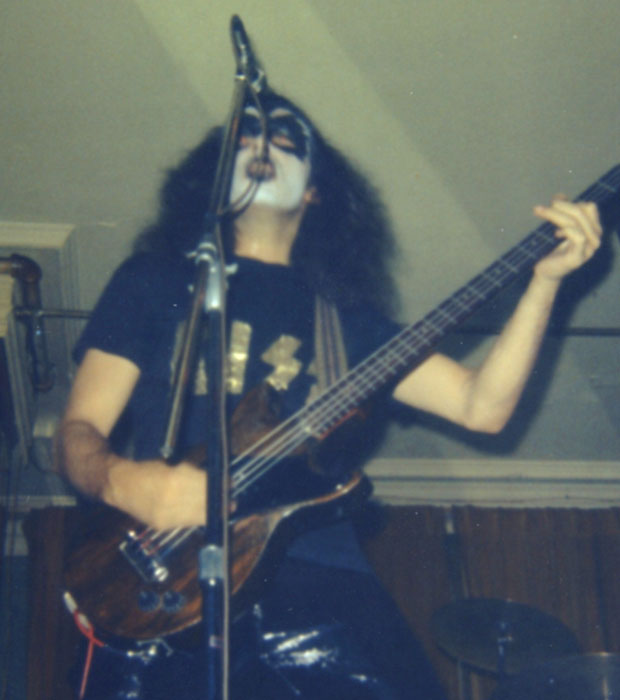
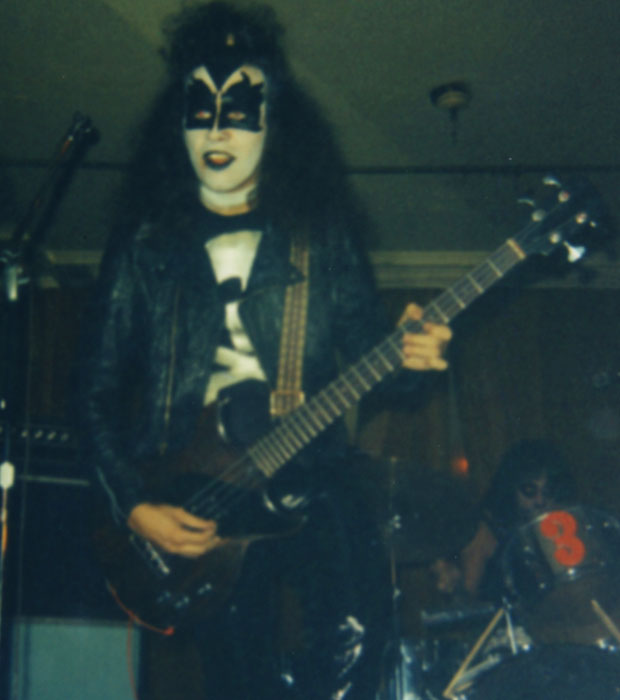
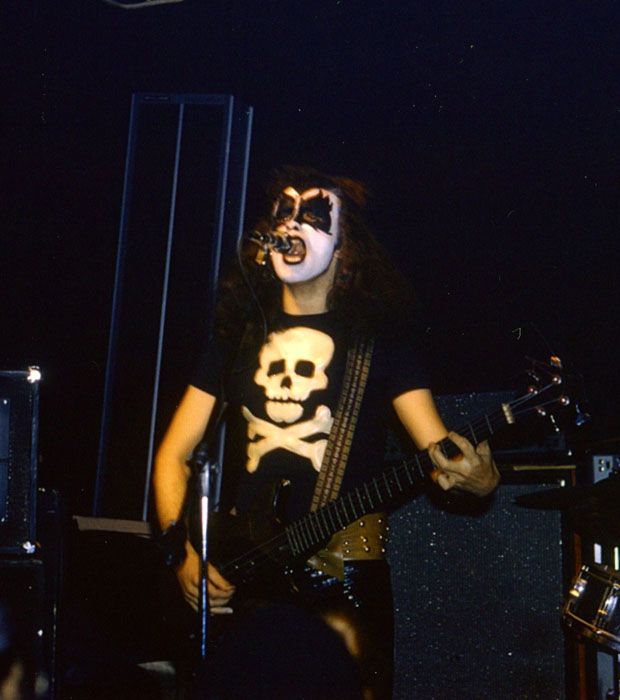
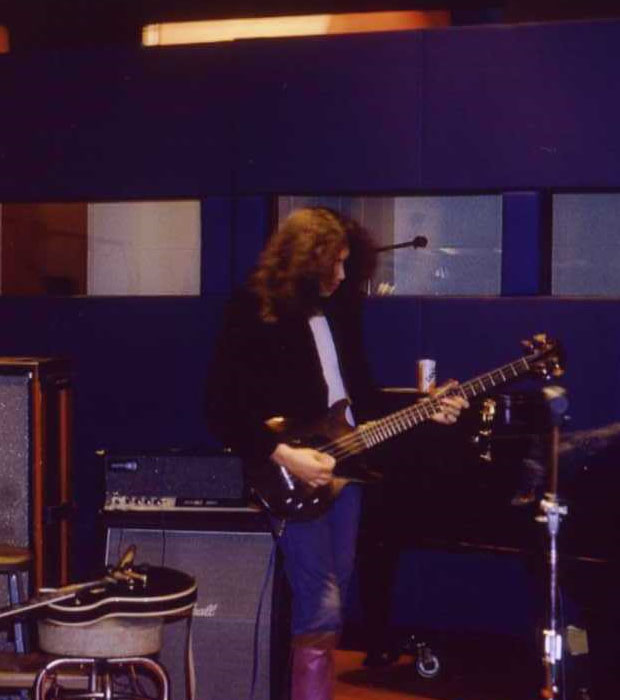
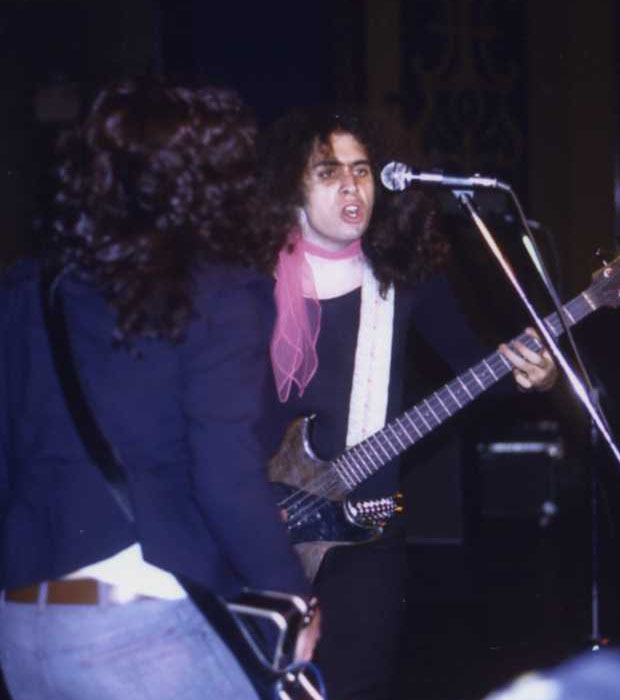
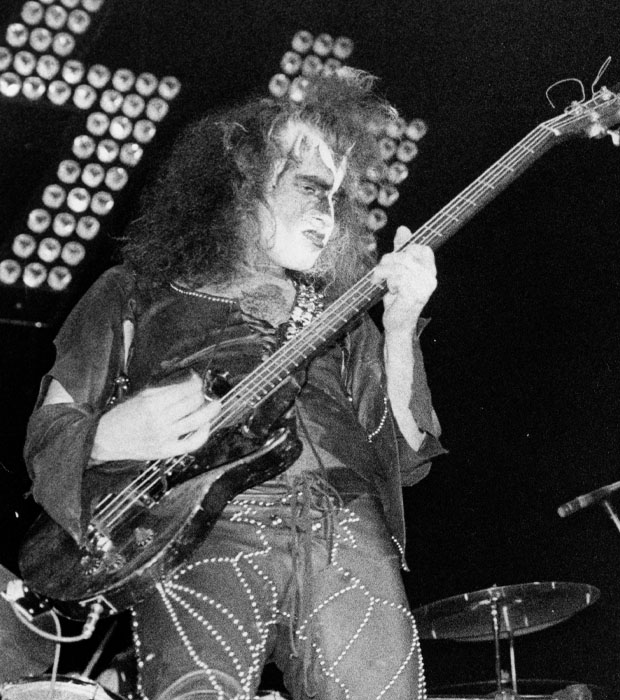
As the band took their first steps towards superstardom and began a lifetime of incessant touring, Gene relied exclusively on his custom LoBue. Naturally it was also the weapon of choice for the early TV appearances like ABC's In Concert and the Mike Douglas Show. I could literally fill an entire web site with hundreds of photos of Gene playing the LoBue over the course of 1974, but these three will suffice to show the LoBue in action for the first half of the year.
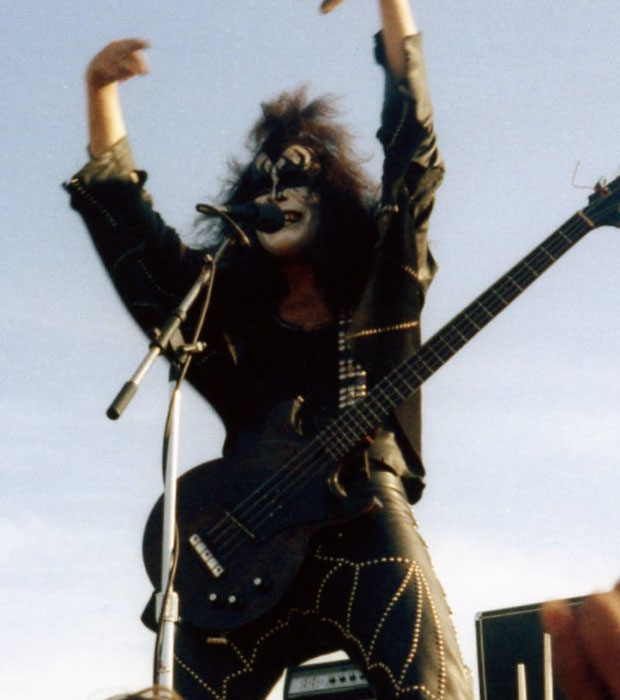
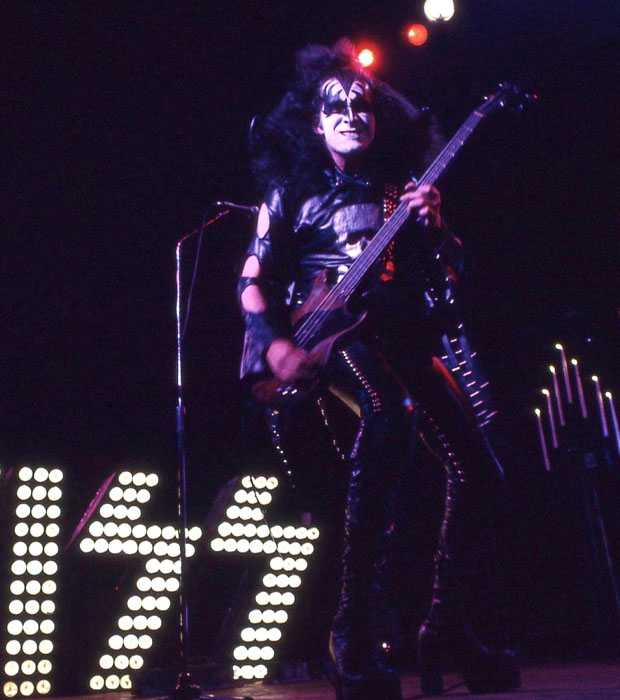
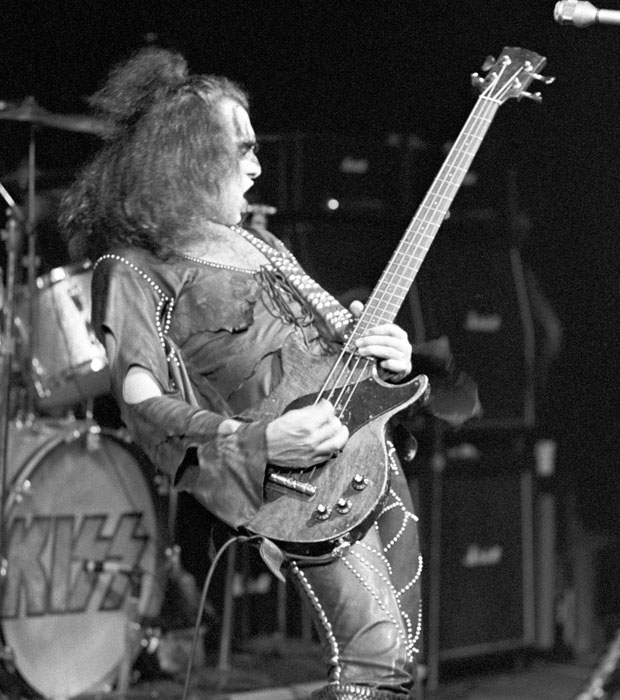
The band spent the better part of August in Village Recorder recording Hotter Than Hell and here we have to be grateful. During these recordings somebody stole Paul's custom LoBue V (and most likely some backup guitars) but Gene's custom LoBue eluded the thieves. Having completed the recordings the band were back on the road again in September. And then, a problem. At the wonderfully named venue Thunder Chicken in Comstock Park, Michigan, something went wrong with Gene's trusted companion. There is a suite of photos from that night that allow us to see how Gene starts the show with the LoBue but at some time during the set J.R. Smalling appears with the backup Fender Precision and readies it for use. Gene closes the show with the P-bass while J.R. stays seated at the side of the stage with the LoBue.
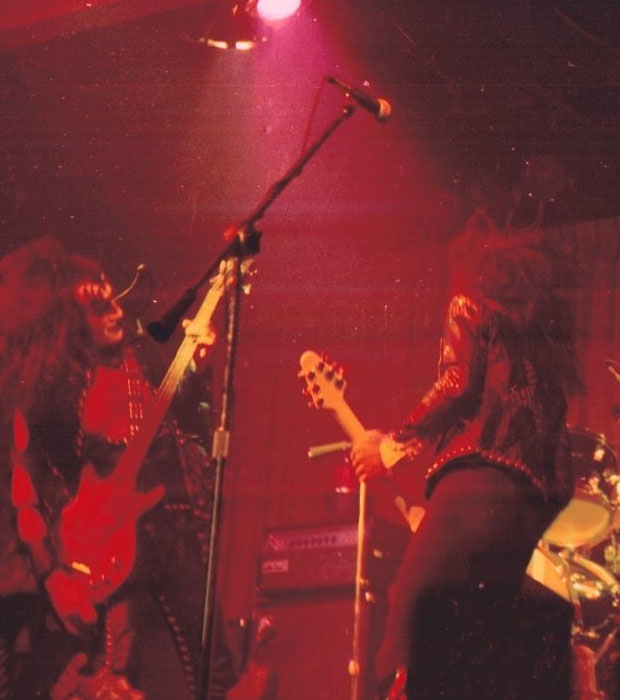
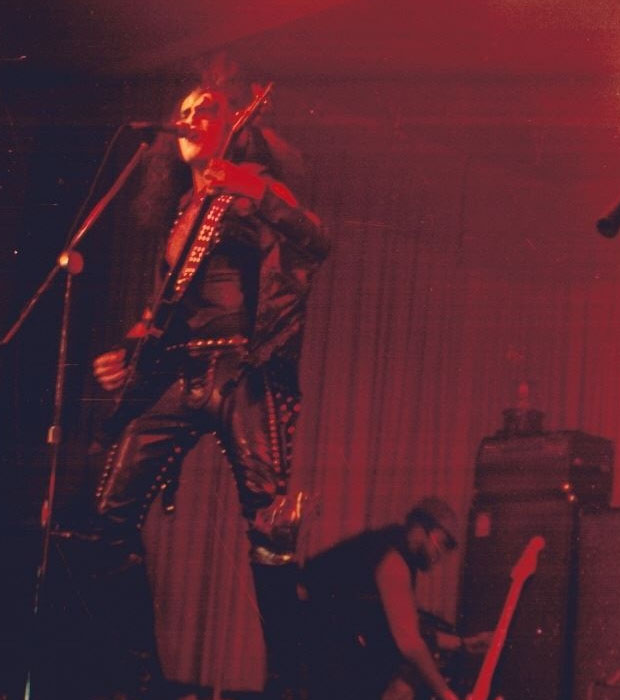
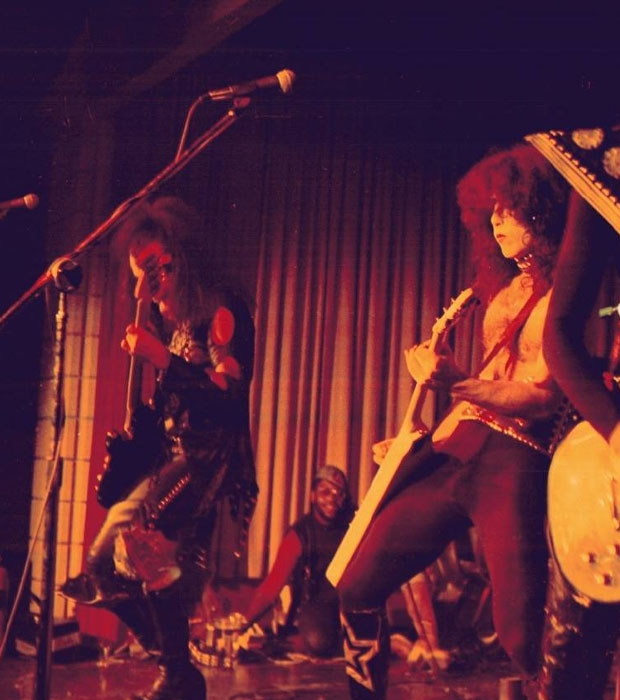
The issue proved short-lived. Although Gene had to rely on the Fender P-bass for a few shows, and had to bring it out briefly during a few more, the LoBue was back to its place as Gene's clear number one in about a week.
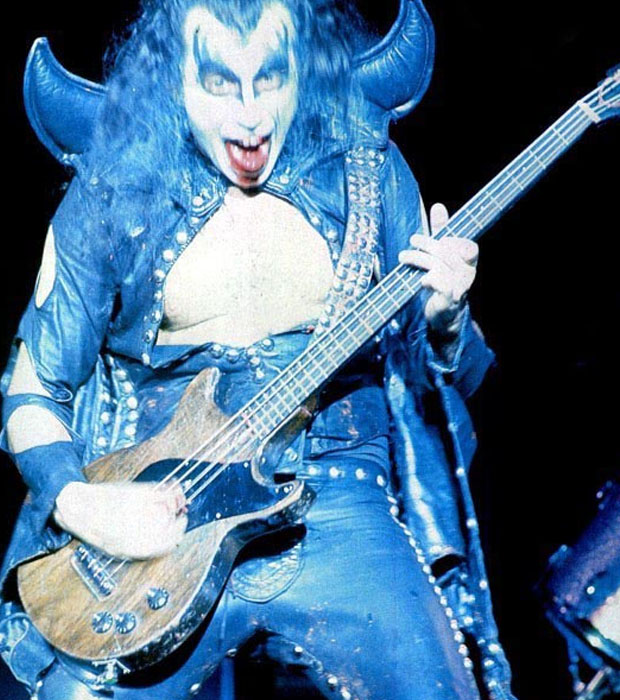
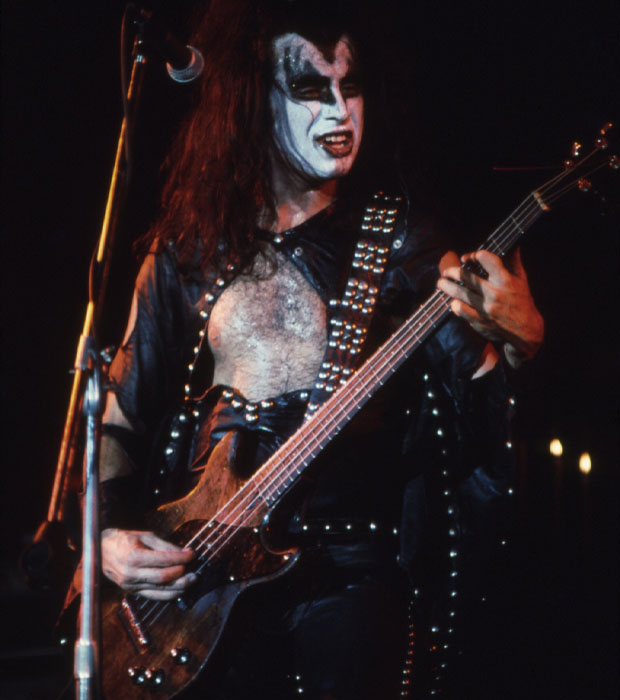
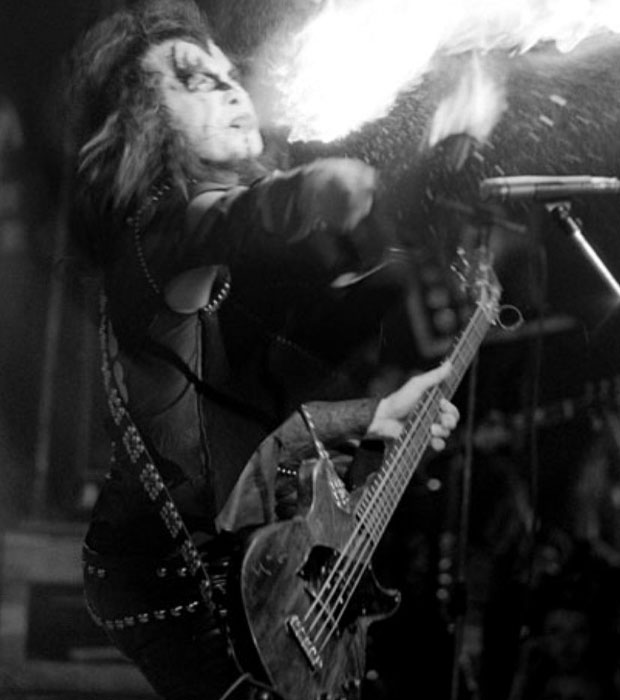
But something was still wrong and in early December the LoBue got patched up. Based on a couple of high-resolution photos I don't think this is a new pickup, rather, it's the old pickup that's been secured using gaffer's tape but the change is noticeable enough that I call this the second version.
I originally thought that the version of the LoBue that showed up in early December had gotten a whole new pickup. It looked so different from the original pickup. But with better photos I've come to believe that it is still the old pickup that has been secured with tape which can be seen as a silvery kind of "frame" in some photos. In some closeups of very high-resolution photos it looks as if the "frame" is almost completely flush to the pickguard and in some cases one can actually see the "seams" caused by the strips of tape. (At least that's what I see.)
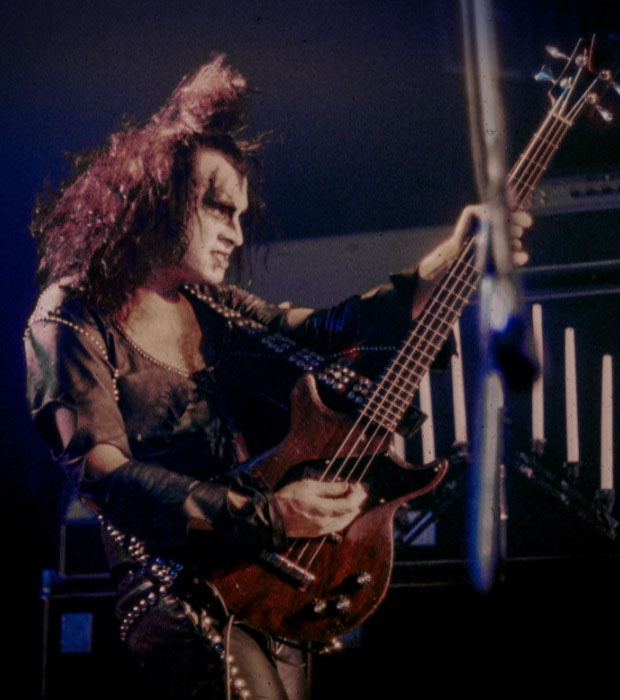
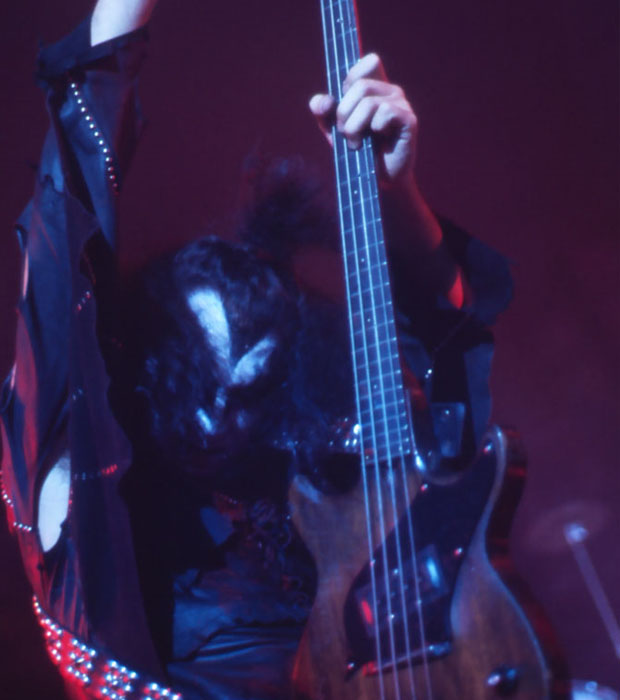
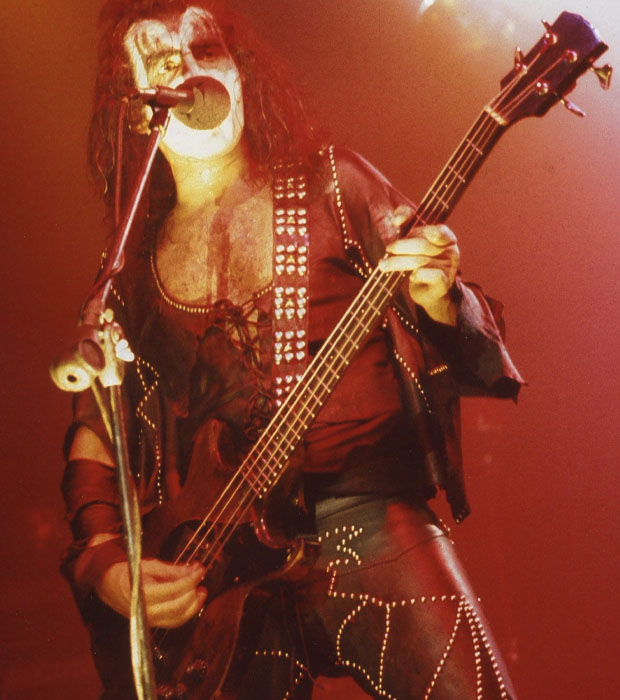
In November and December Gene started using the Gibson Grabber but the custom LoBue wasn't discarded, rather, as we will see the two alternated for quite some time. There was something about this particular bass that appealed to Gene and he kept it long after he could afford any bass on the planet.
When the year turned to 1975 Gene looks as if he was at least temporarily weaned off his trusted custom LoBue. Throughout January and February the Grabber is the number one choice, it isn't until a two-set night in Northampton, Pennsylvania on March 19, 1975, that it returns for a brief shining moment. The Grabber is still the number one bass for the following months but the LoBue starts popping up here and there for a song or two as seen in the photos below and during April it's almost like a game of you-go-I-go, the Grabber and the LoBue alternating shows.
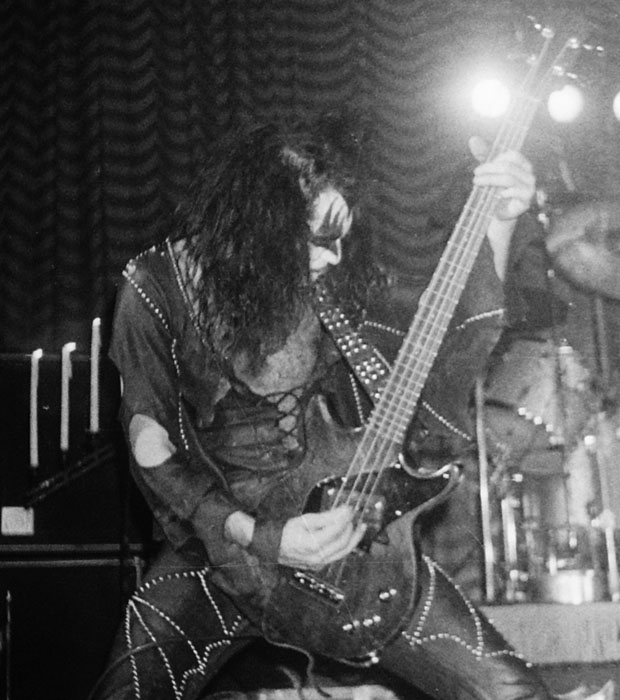
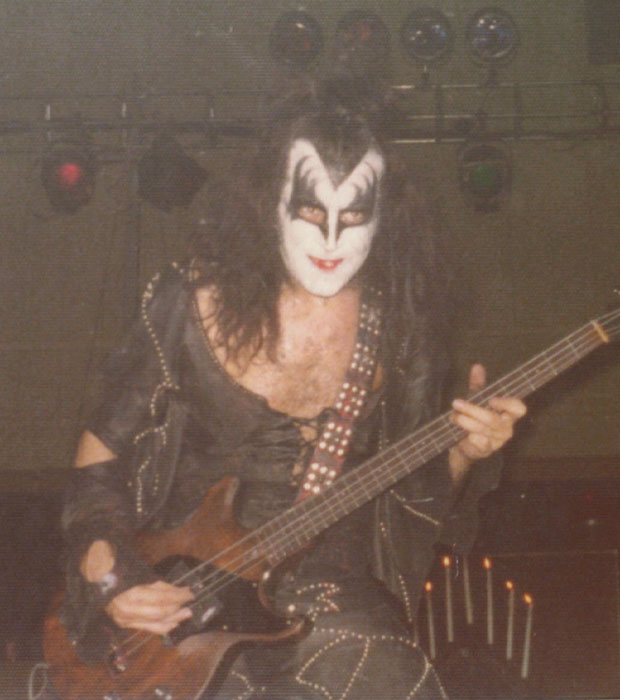
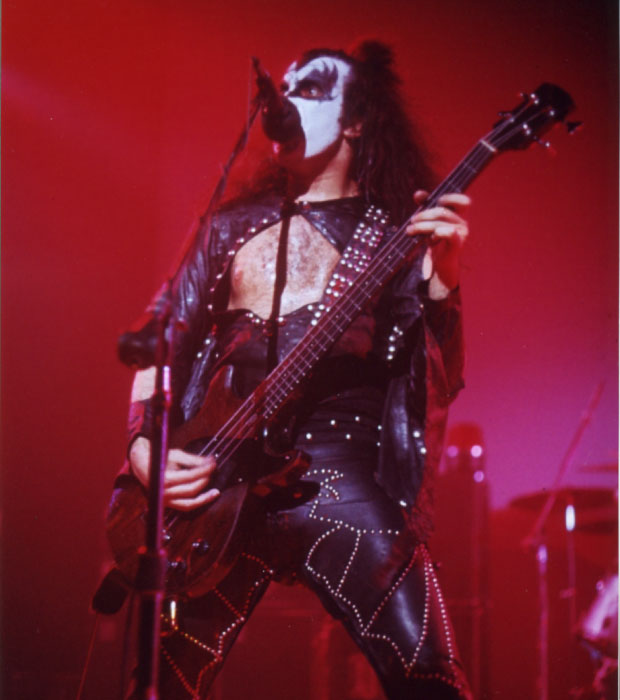
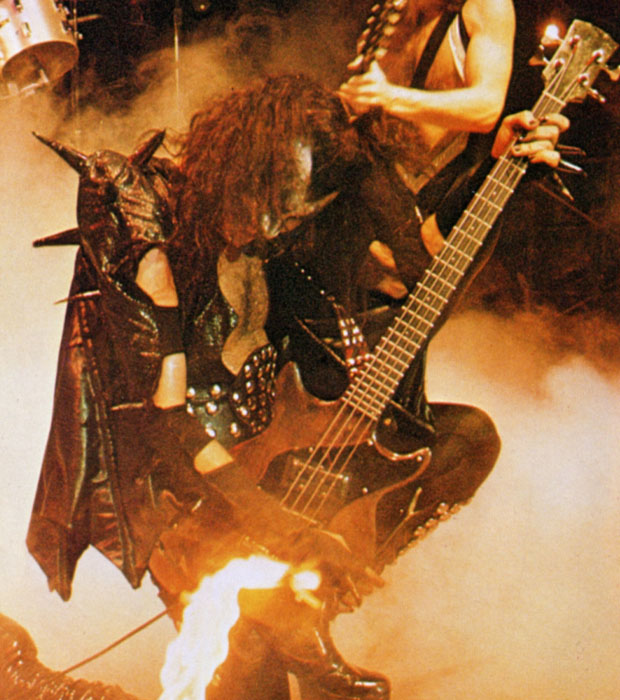
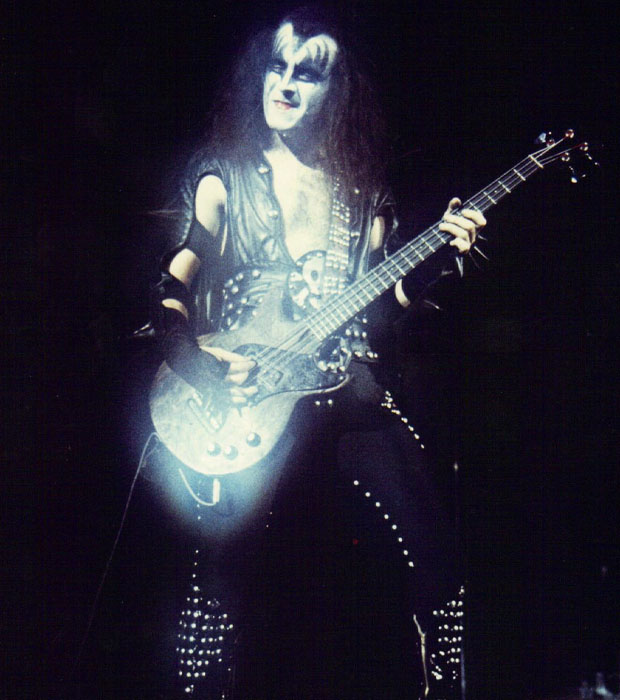
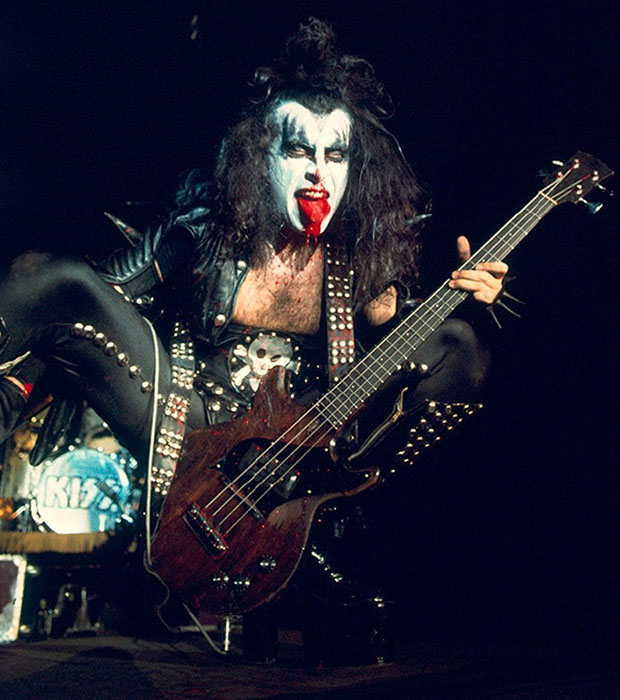
And then it disappeared. After May 25 it was nowhere to be seen as the Grabber took over and was joined by the Gibson Ripper in mid-June. The custom LoBue didn't return until early November and when it did it was well nigh unrecognizable.
Gene has claimed that he had the LoBue re-finished black before the start of the Alive! Tour. That may very well be but the bass doesn't show up again until November 7. And this is the start of the most intense couple months in the life of the LoBue. Fasten your seatbelts, things are happening fast during this period. The version of the LoBue that shows up on November 7 has gotten a black finish that extends to the entire bass; body, neck, and headstock. There is also faux white binding on the body and the headstock that appears to be painted. The original pickup has been replaced by a P-bass pickup of unknown brand. The original violin-style bridge and the witch hat knobs were kept.
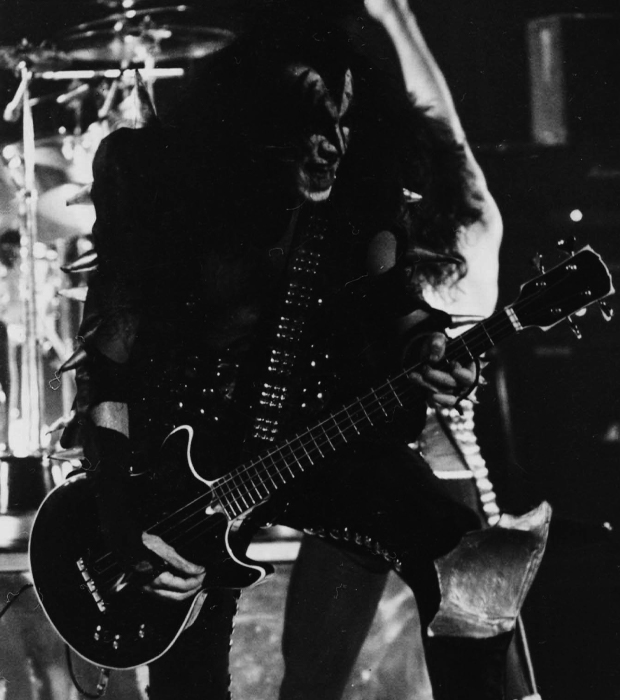
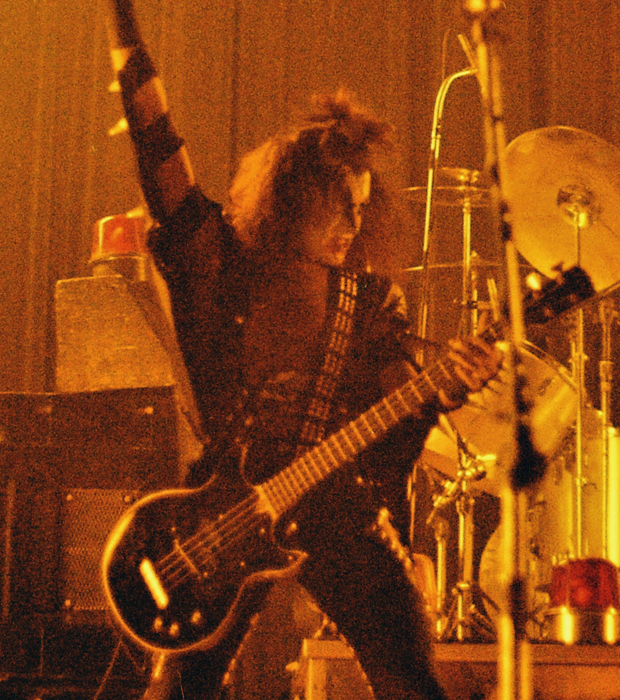
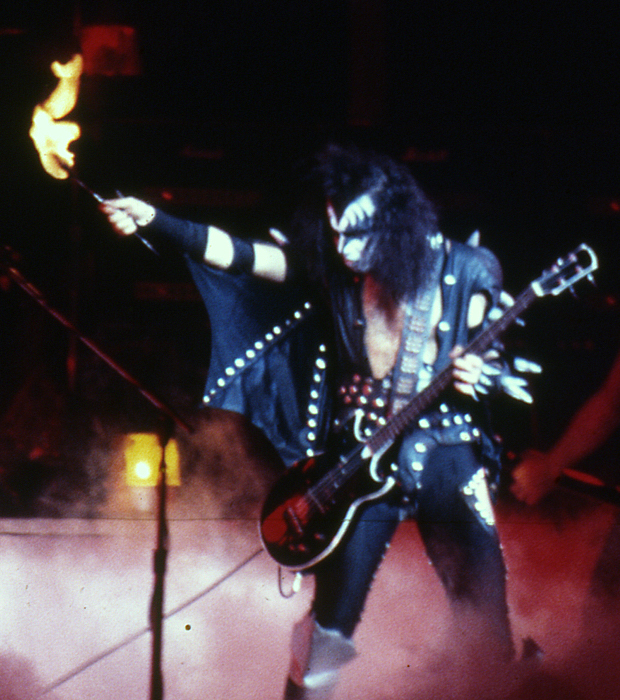
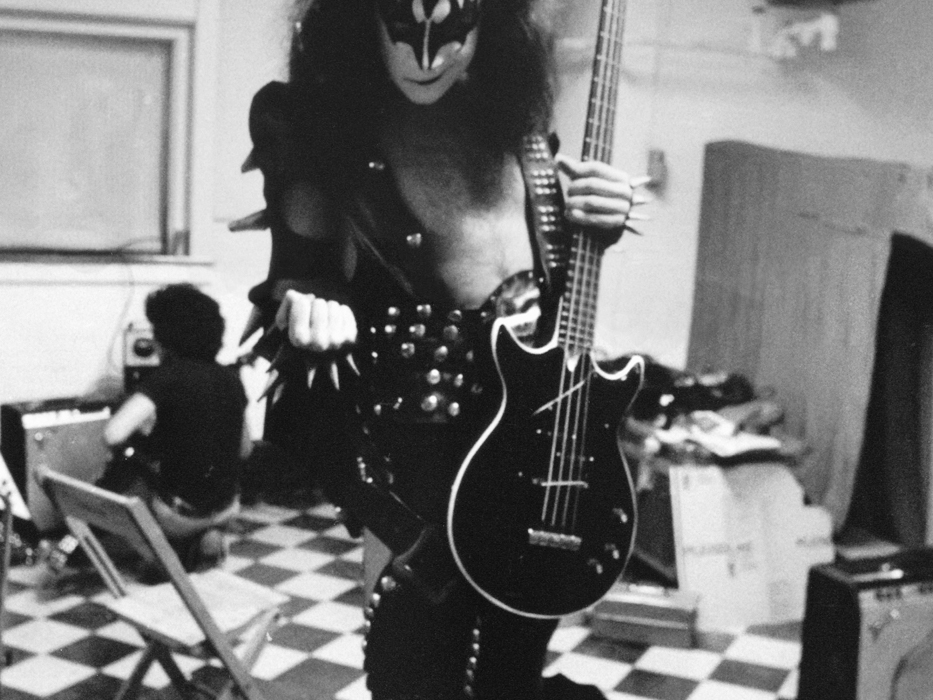
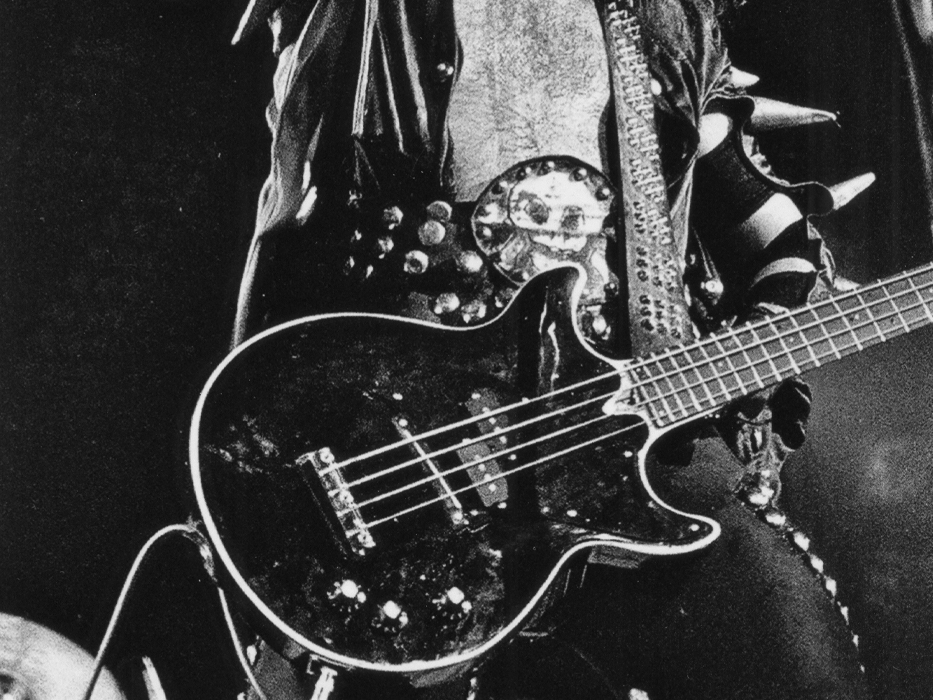
Around the same time it look as if the LoBue had gotten a padded addition on the back of the body. I don't know if it's on the bass when it returns to the lineup but there is something on the back of the bass by November 17 and in Terre Haute, Indiana on November 21, 1975, it's clearly visible. We'll come back to it later.
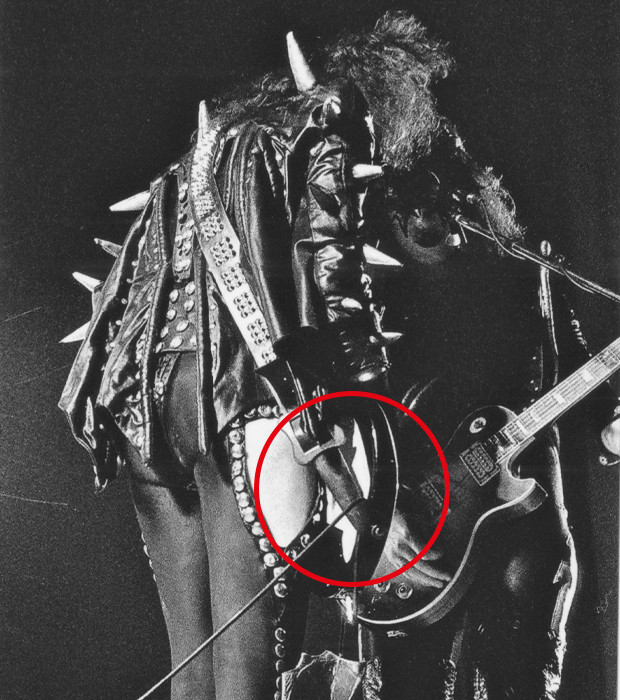
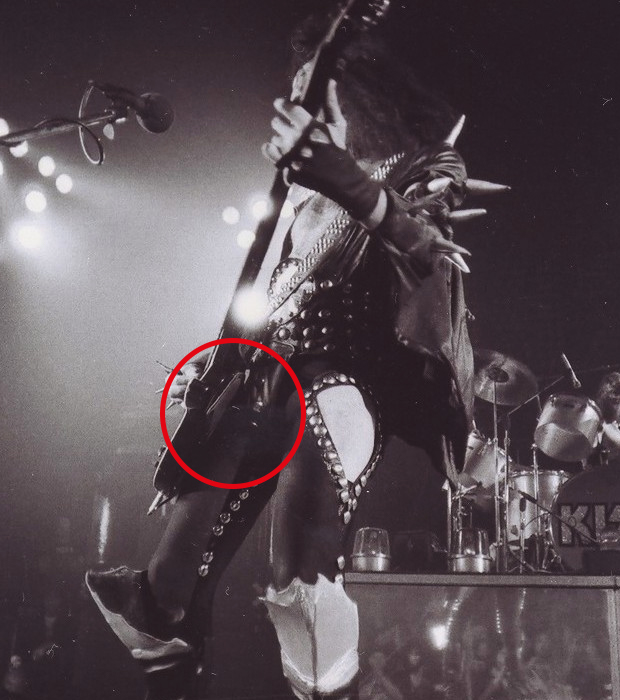
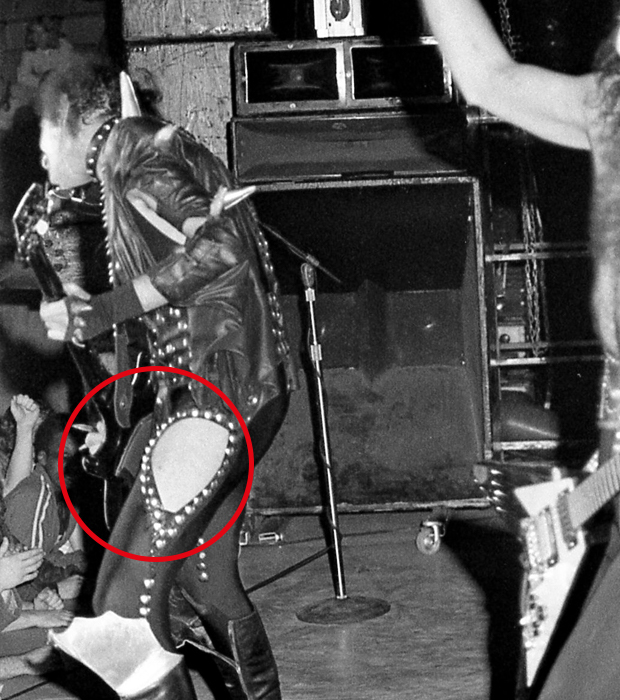
And a few days later one of the more puzzling "modifications" happen. Only the volume knob is switched for a speed knob. Why change just that one knob? I think the answer lies in the original specifications for the LoBue on the handwritten order note. If "handmade p.u. with choke" did in fact mean that it was a two-band passive circuit, when the pickup was changed this functionality was lost and with it the need for a third knob. Since Gene probably only used the volume knob anyway it may have been changed so that it was easier to locate. This is such a minor detail that I don't consider it a separate version. This minor wrinkle in the LoBue story first shows up in Terre Haute on November 21.
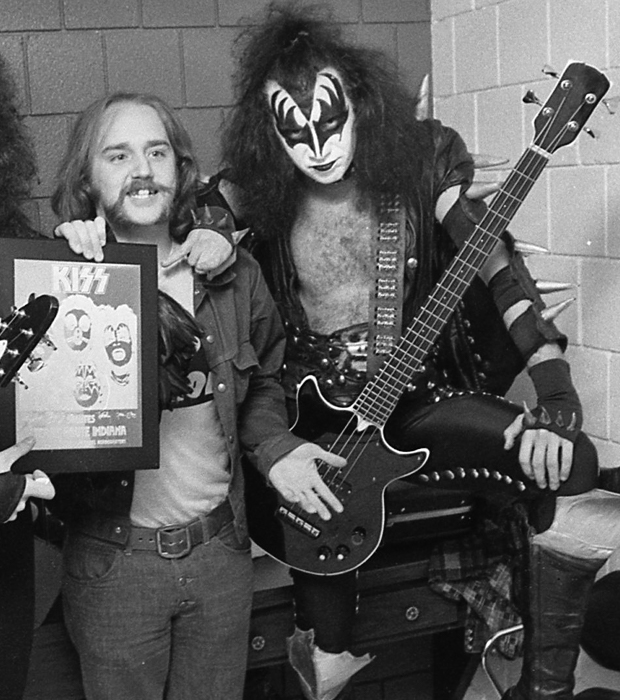
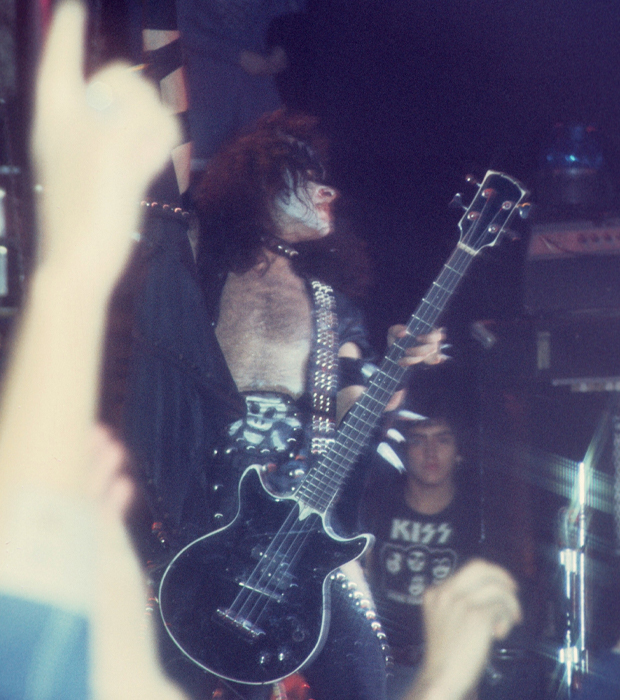
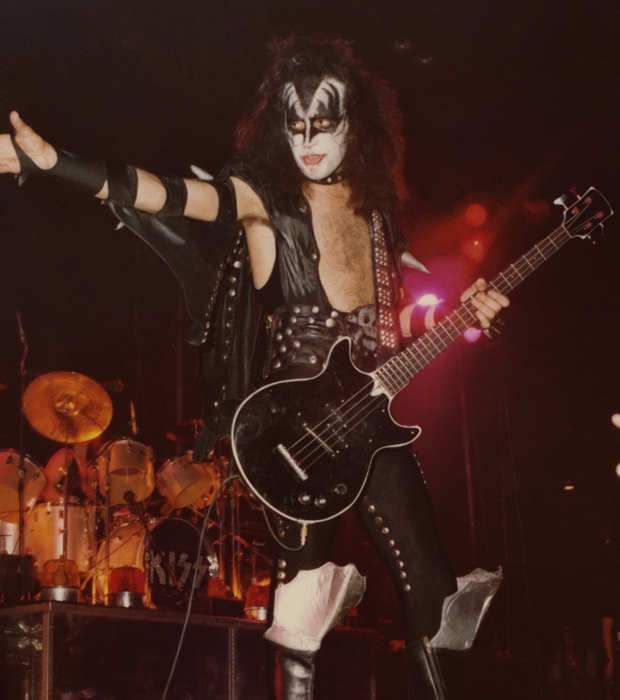
By mid-December—although possibly earlier—the P-bass pickup is changed in favor of a Gibson EB-0 pickup (part no. PU-601). These photos don't really make that clear so it's partially deduced from later photos. Here all the knobs have become speed knobs but the violin-style bridge is retained.
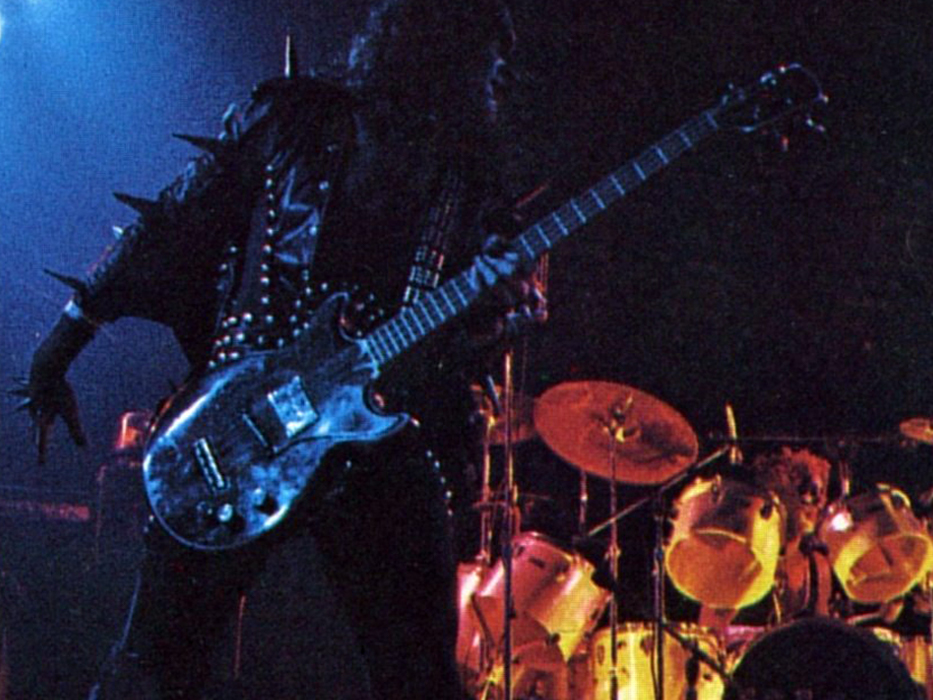
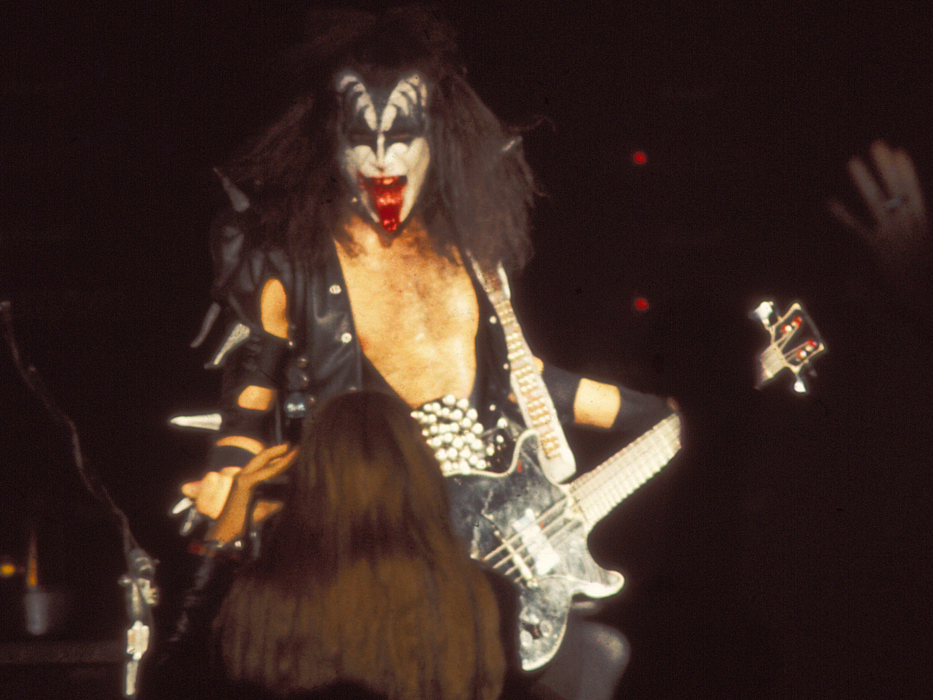
This version of the bass seems to be very short-lived. There is a relative lack of photos from the third week of December but we know that Gene used the Gibson Ripper for the show in Louisville, Kentucky on December 27 and that the LoBue returned on December 30 so it seems reasonable to think that the the next "upgrade" happened around that time.
The LoBue returned to the stage on December 30 in Providence, Rhode Island and—wouldn't you know it—it had changed again. This time the original violin style bridge had been replaced by one with adjustable saddles in an effort to alleviate the intonation problems inherent in any set bridge. The new bridge looks a little like a cross between the two-point bridge used on the Gibson Thunderbird 1963-1969 and the two-point Tune-o-Martic, but we have no good, clear shots of the LoBue during this brief period so it's hard to tell. Whatever this bridge was it was a massively failed experiment. This is yet another time where we almost have a play-by-play of when the LoBue experiences an issue. Gene obviously opened the show with the LoBue, there are backstage photos of him with it before the show, and things seems to have worked well up to his bass solo. Then some of the strings jumped out of position.
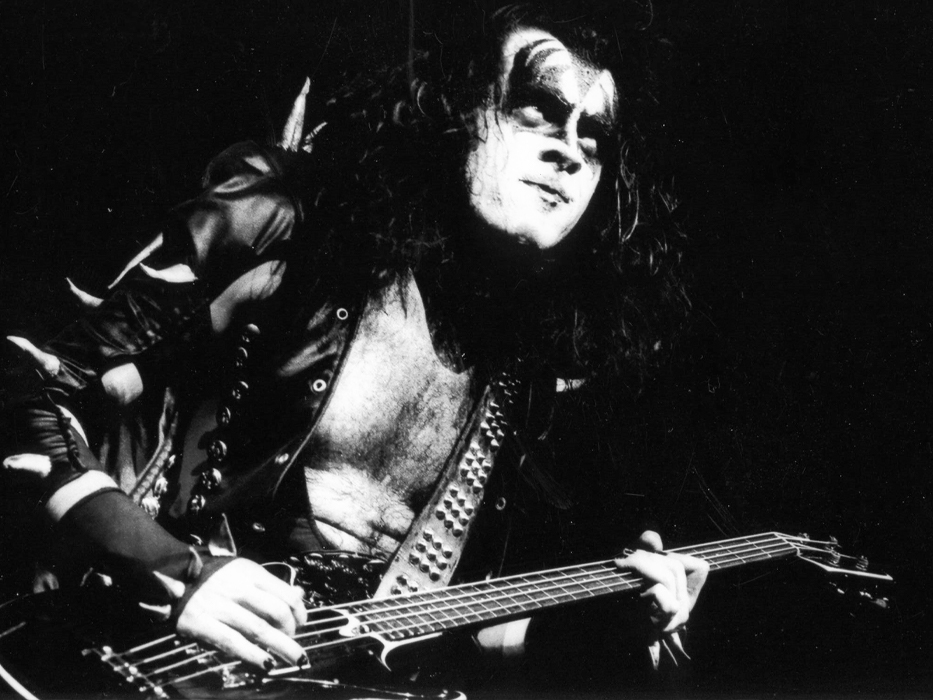
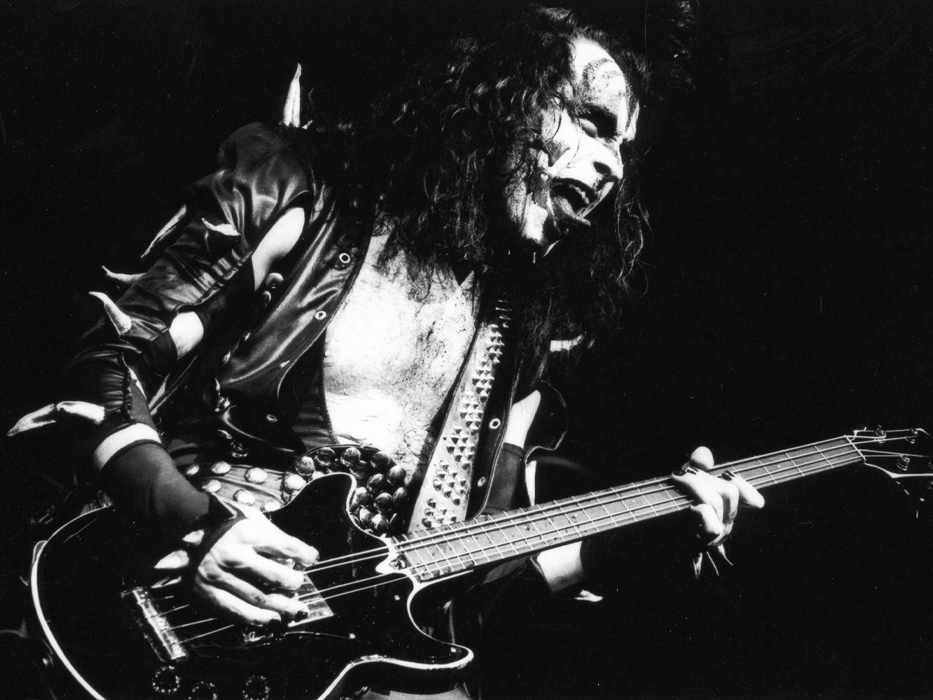
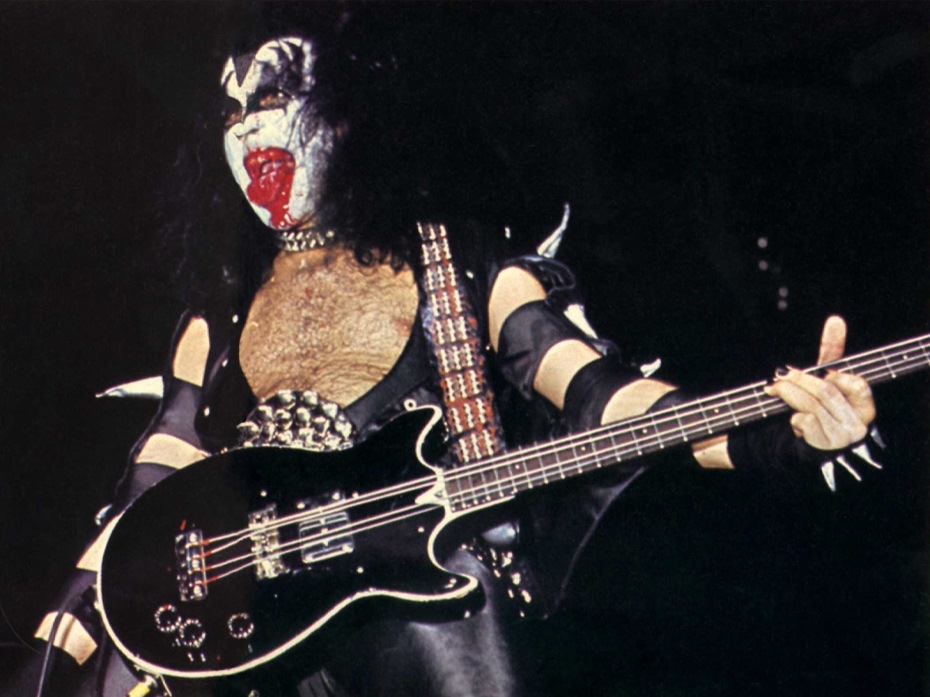
Gene finished the show using the Ripper (and the Grabber on standby at the side of the stage). Despite this the LoBue was back with the same bridge the following night, probably because it was the last concert scheduled before the band were set to enter the studio in January 1976 and there wasn't time to source and install a new bridge.
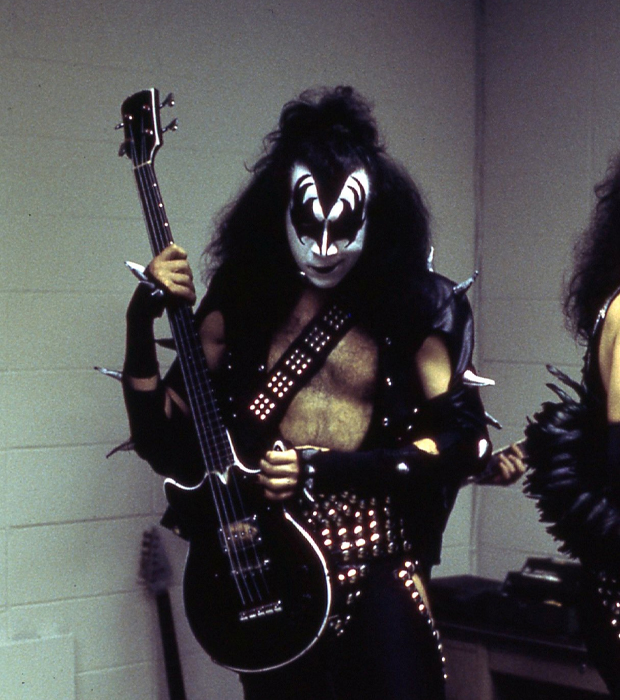
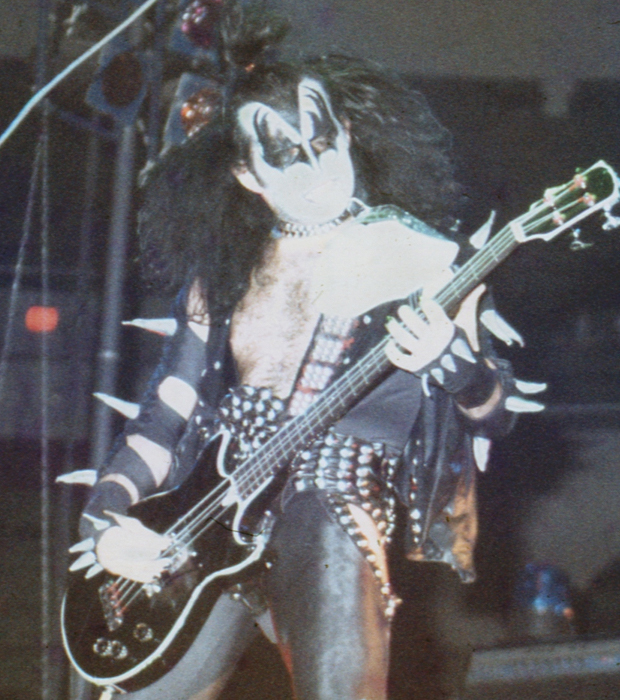
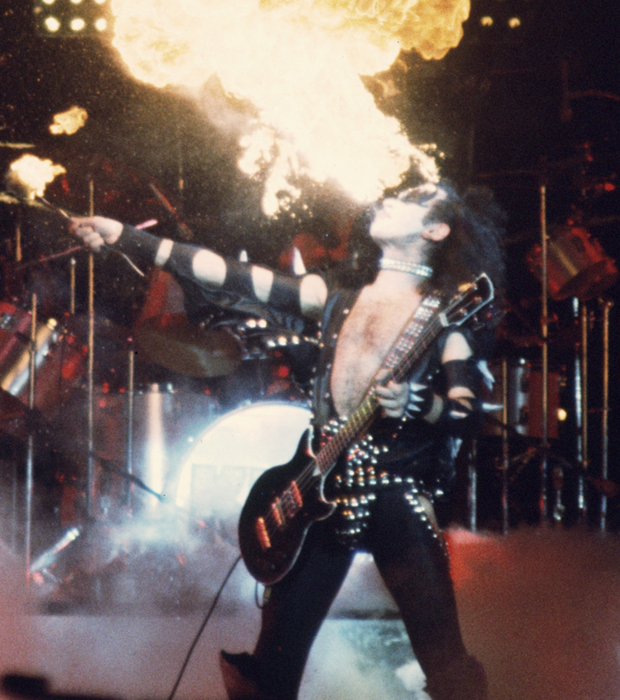
When the band returned to the stage after the Destroyer sessions ended the bridge had been changed once again. In Erie, Pennsylvania on January 23, 1976, the bridge itself isn't visible, just that the tailpiece is no longer on the bass, but I think it's safe to assume that it's the same bridge that is seen on January 25 in Detroit.
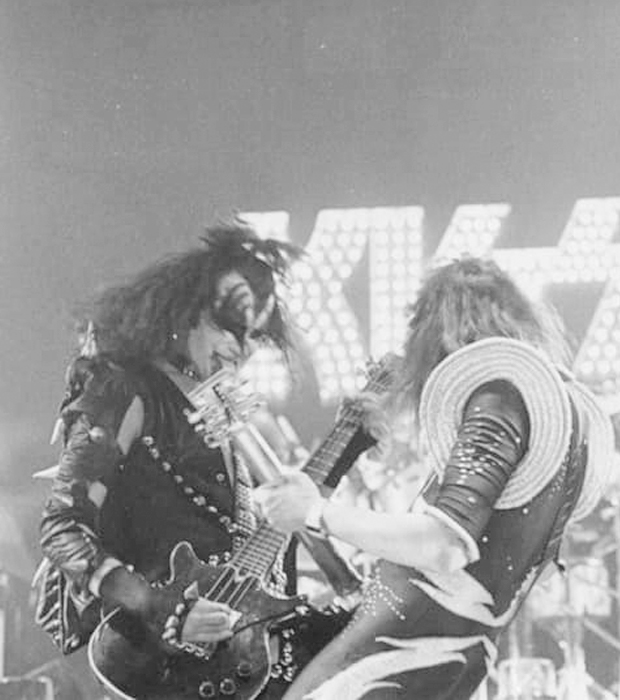
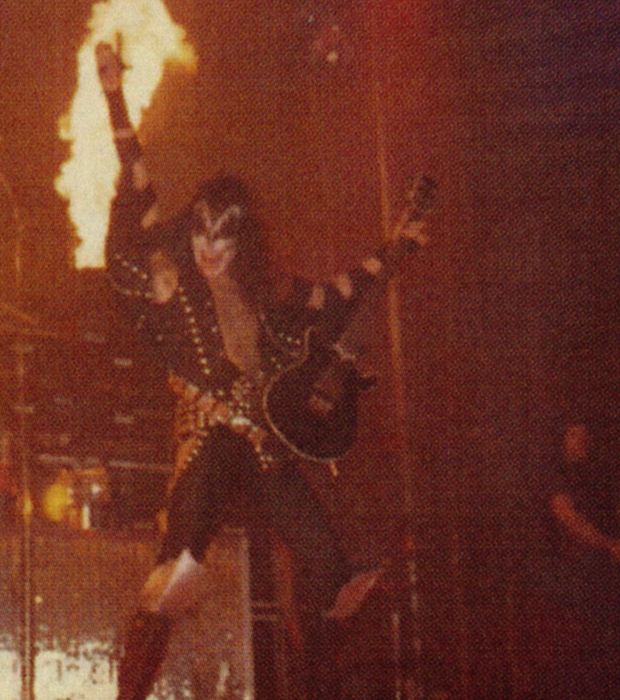
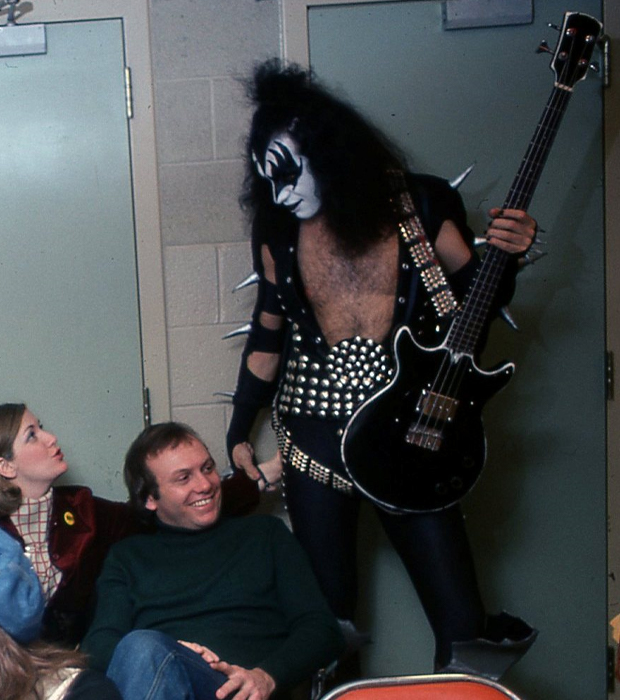
This simply appears to be a stock Fender Precision bridge. Since the tailpiece was no longer necessary it had been removed and in the spirit of the "5 rows out" concept KISS adhered to, the route in the body has been covered by a simple strip of gaffer's tape. The bridge looks as if it wasn't very well adjusted at first. This backstage photo from Detroit shows that the LoBue had an action that could make a grown man weep.
If you look closely at the top photo below you can also see that the pickguard has had a small piece break off right at the lower edge near the bridge. Based on the photos I have this is the first time this defect shows up but the late 1975 photos are not very detailed or from angles that make it hard to tell if the pickguard is intact.
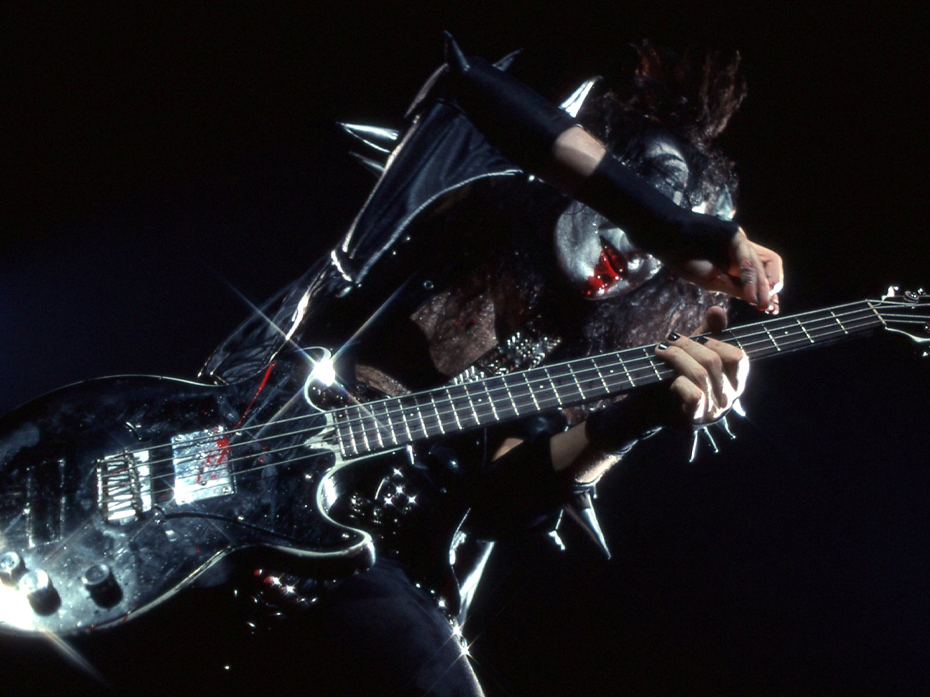
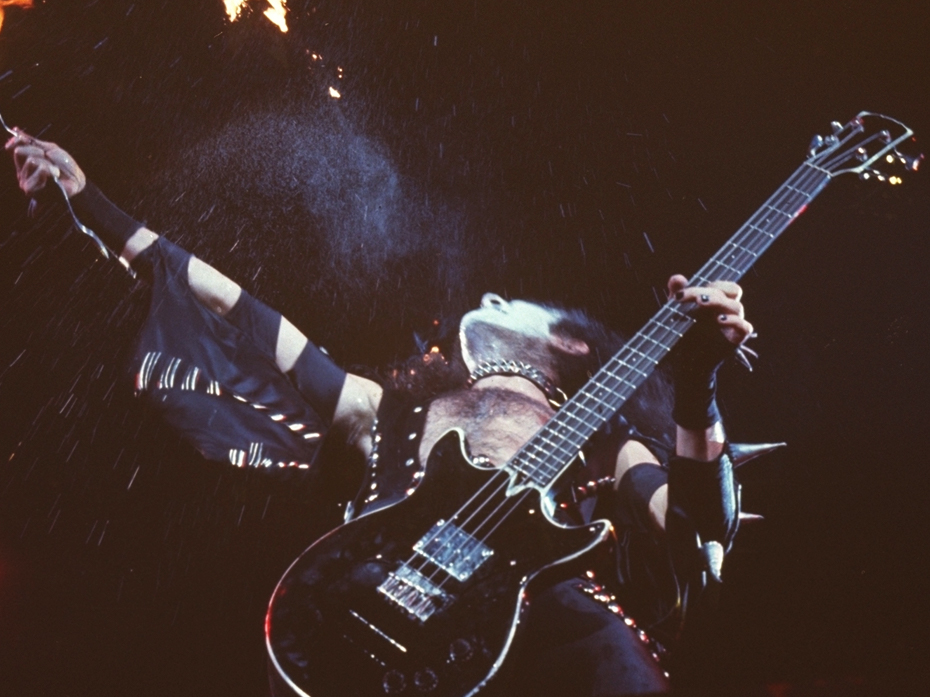
The mkV version of the LoBue lasted just two and a half weeks. I assume that Gene wanted to see how the new bridge felt but once he was sure it was alright he added a detail that had been, and was going to be, a standard feature.
This version simply had a bridge cover added over the Fender bridge. It looks as if it was a Grabber bridge cover rather than the slightly narrower version used on the Ripper or Thunderbird. Compared to how these bridge cover were mounted at the Gibson factory, the one on the LoBue was mounted "wrong". This is the version of the LoBue that would "stick", it stayed the same—apart from amassing some more wear and tear—through the rest of the Alive! Tour, the European jaunt in May and June, and the Summer tour in support of Destroyer.
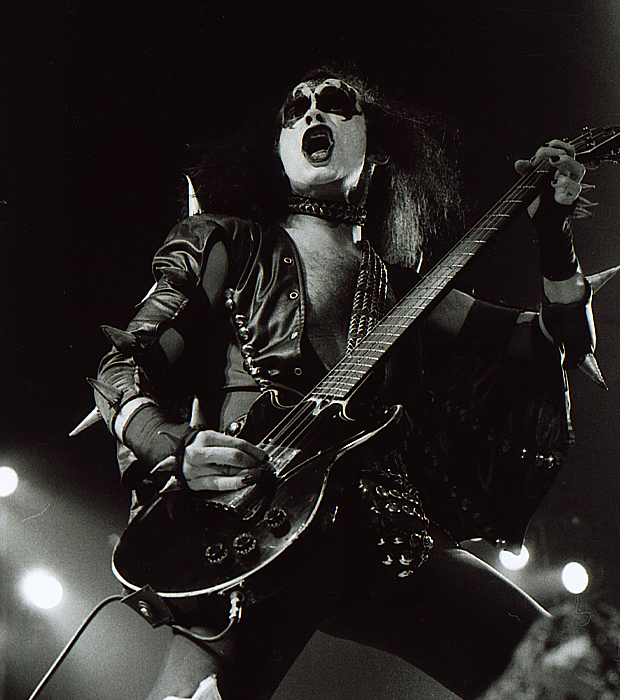
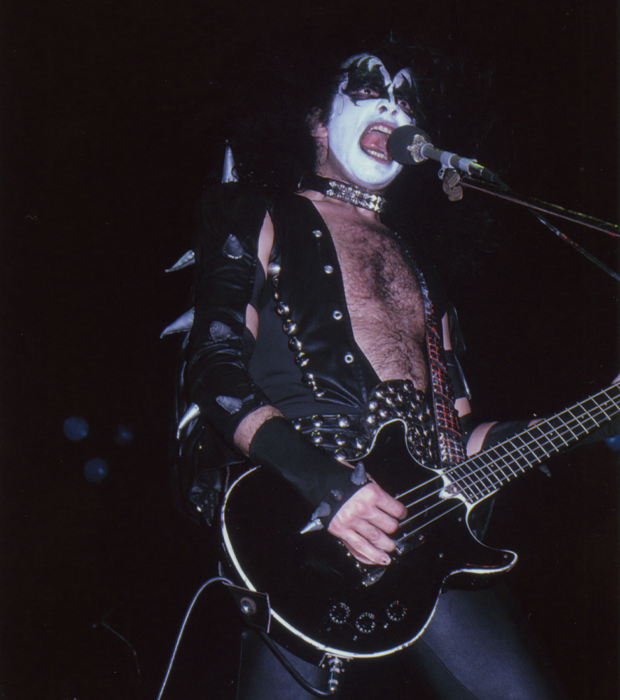
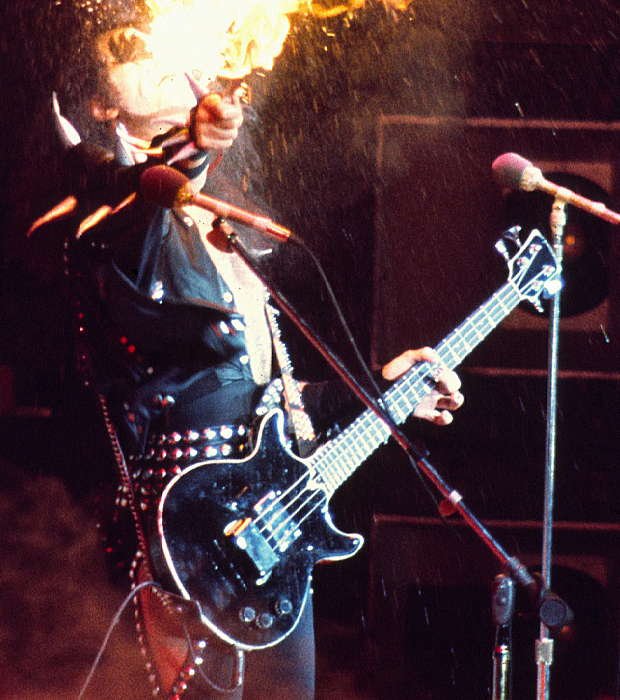
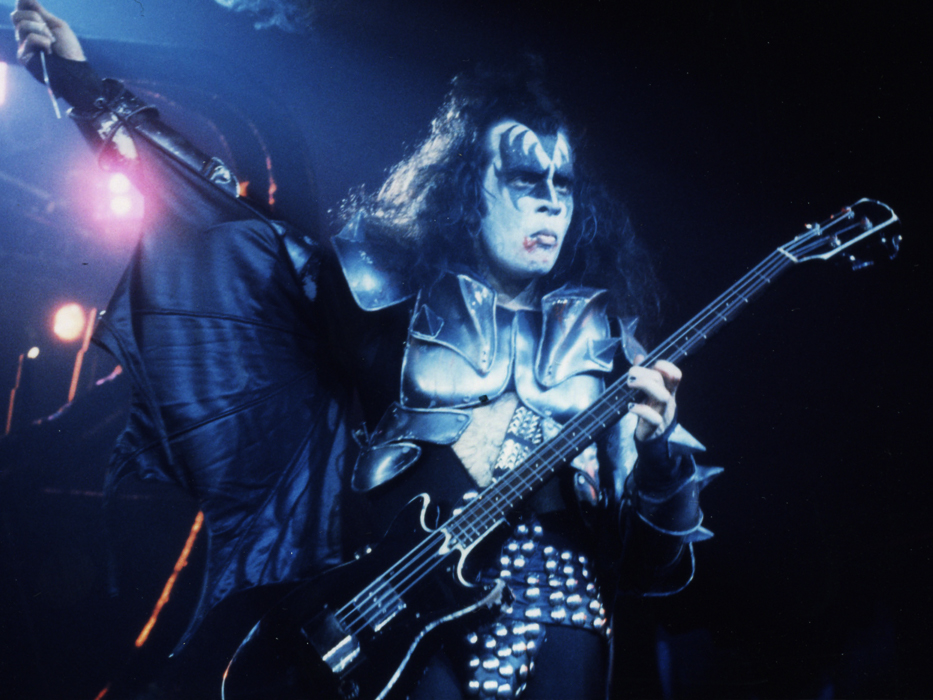
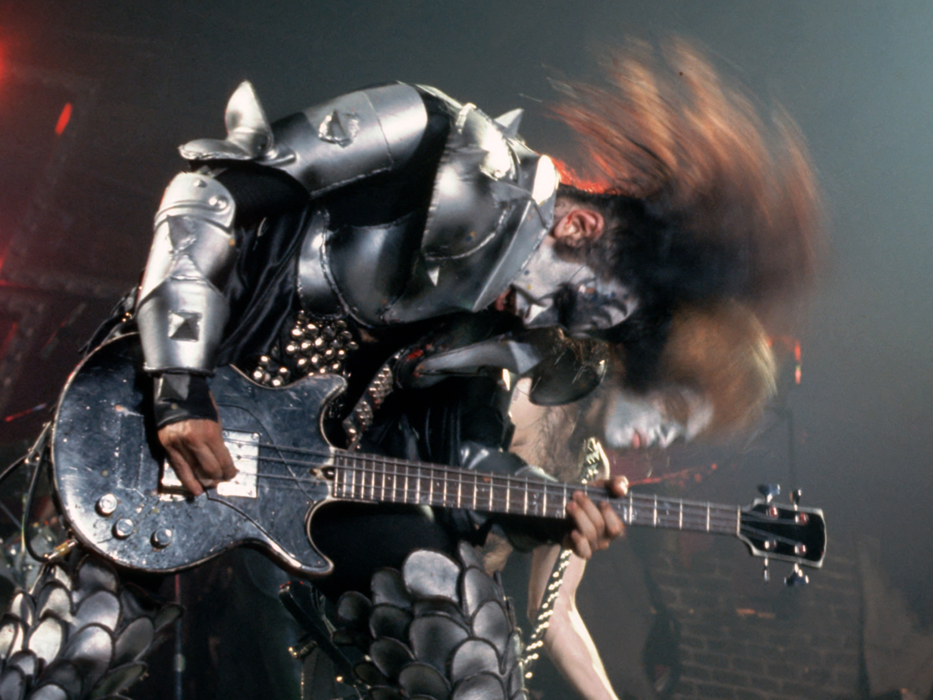
And here's as good a place as any to take a slightly closer look at the back cover that had gotten added in November 1975. It's not entirely clear what this cover was. It bears a certain resemblance to the covers used on Hohner Bartell instruments but whatever it was it had been modified to fit the LoBue. In the closeup photo from Los Angeles you can see how the lower edge seems to be secured to the body using two strips of tape while the upper part looks to be screwed into the body. These covers were originally for playing comfort but this was clearly added to prevent Gene's codpiece from wreaking absolute havoc on the back of the LoBue.
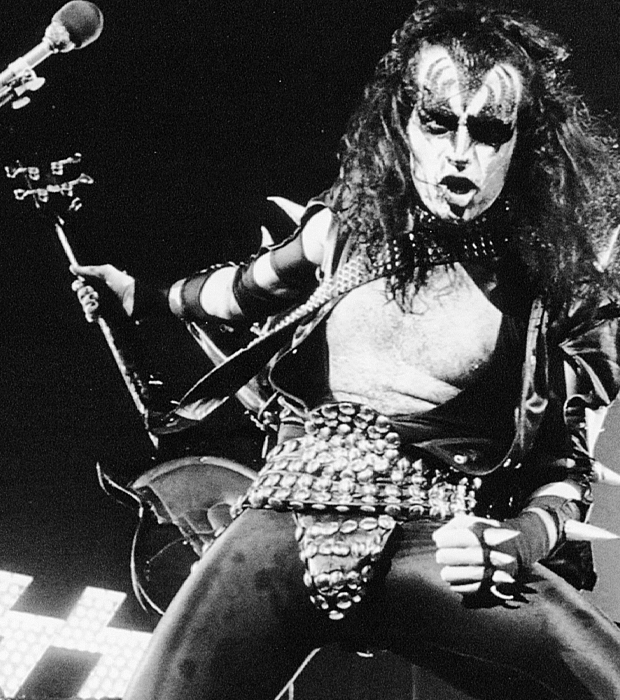
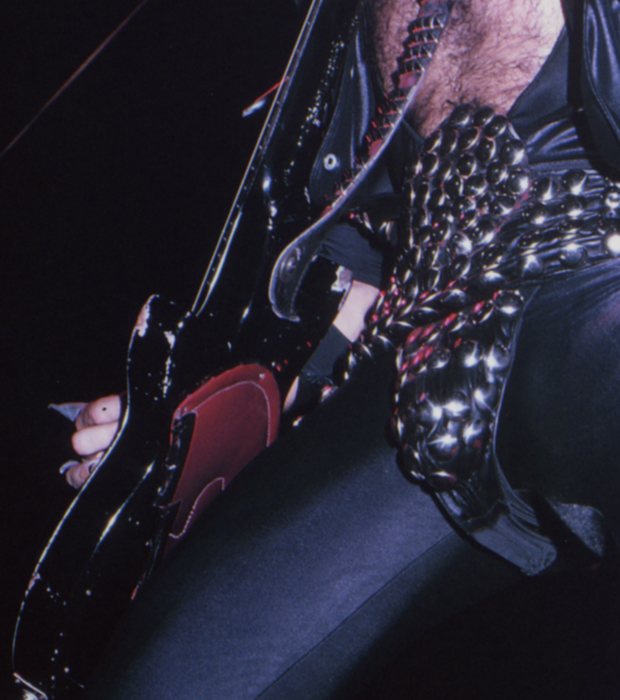
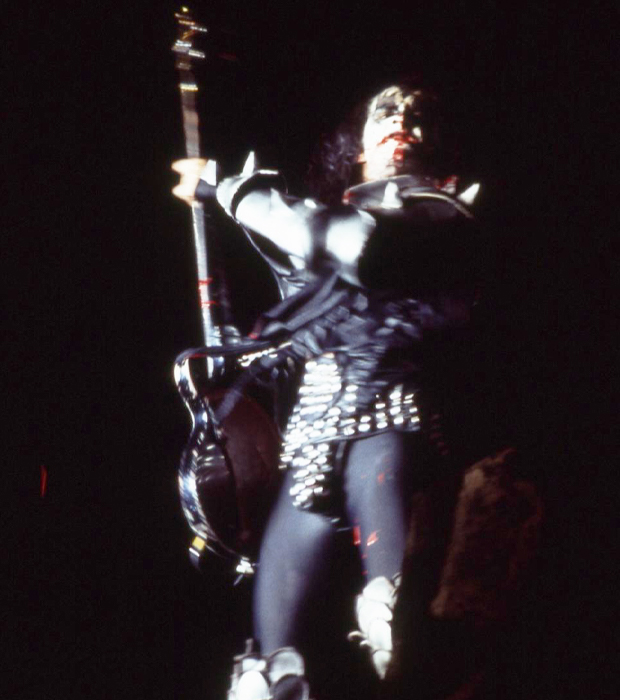
When KISS returned to the stage for the Winter Tour 1976-77 the LoBue had gotten yet another make-over. The base plate of the Fender Precision bridge had been moved back to (roughly) where the original tailpiece was located and a new bridge had been installed under the bridge cover. Unfortunately I have no idea what that bridge was. There was also a new, faux bindning applied to the body. This was just strips of white tape that had been not so carefully taped to the outline and in the Kenny Saltzman photo below you can clearly see how uneven it was and that it had already started to crease along the lower edge.
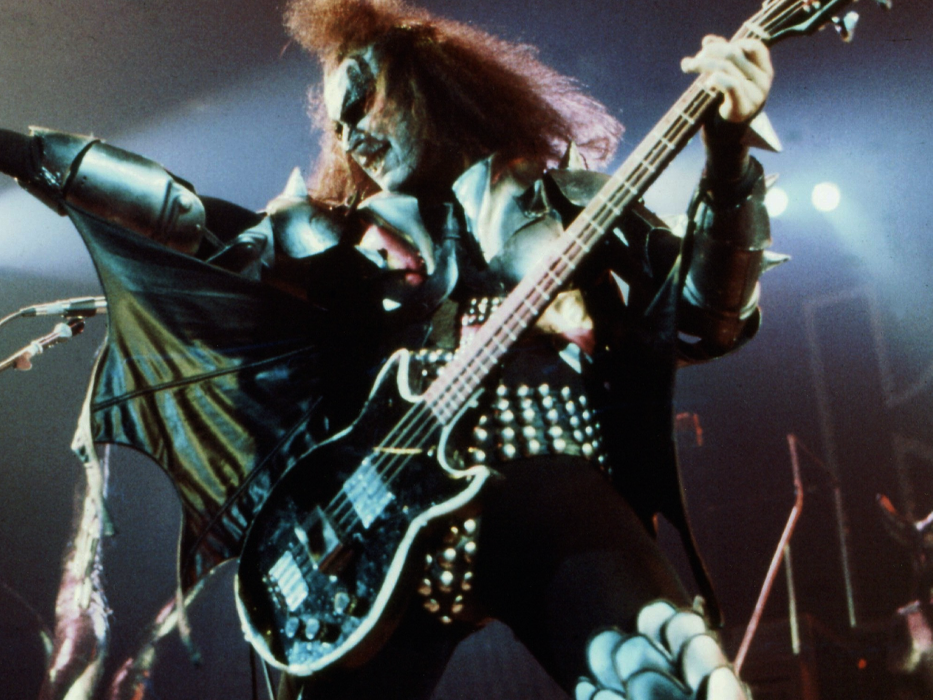
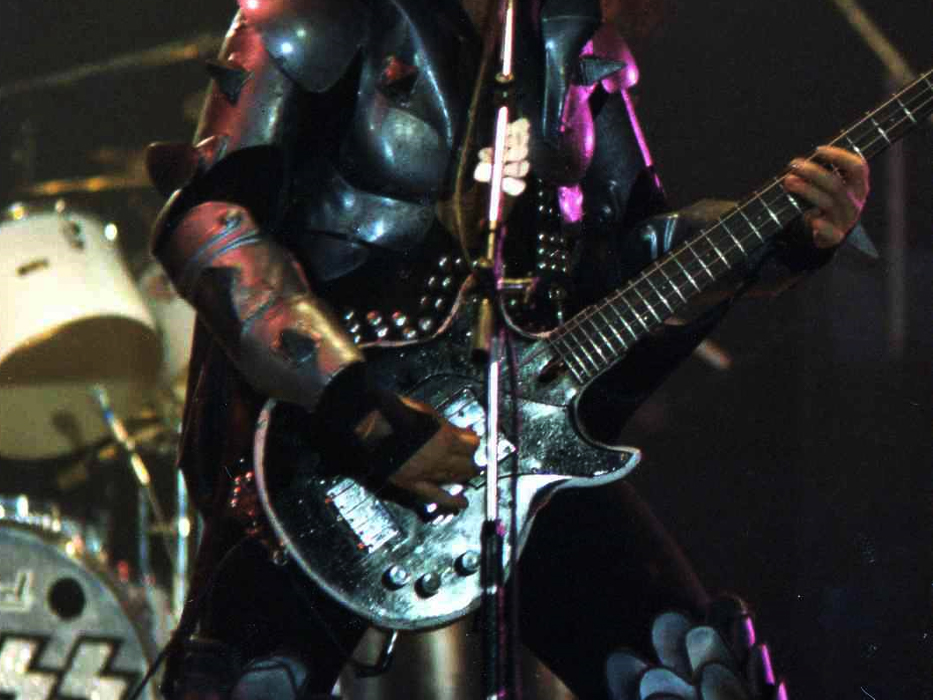
The taped binding was not exactly durable and after a mere ten shows—possibly less—it was removed altogether and the edges of the bass once again showed the serious wear it had been subjected to.
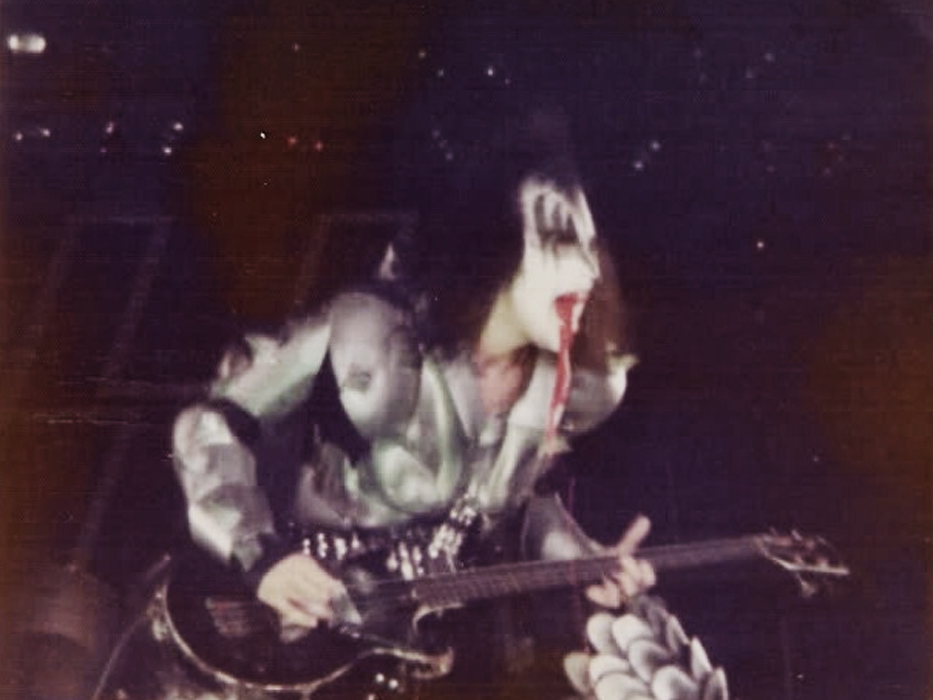
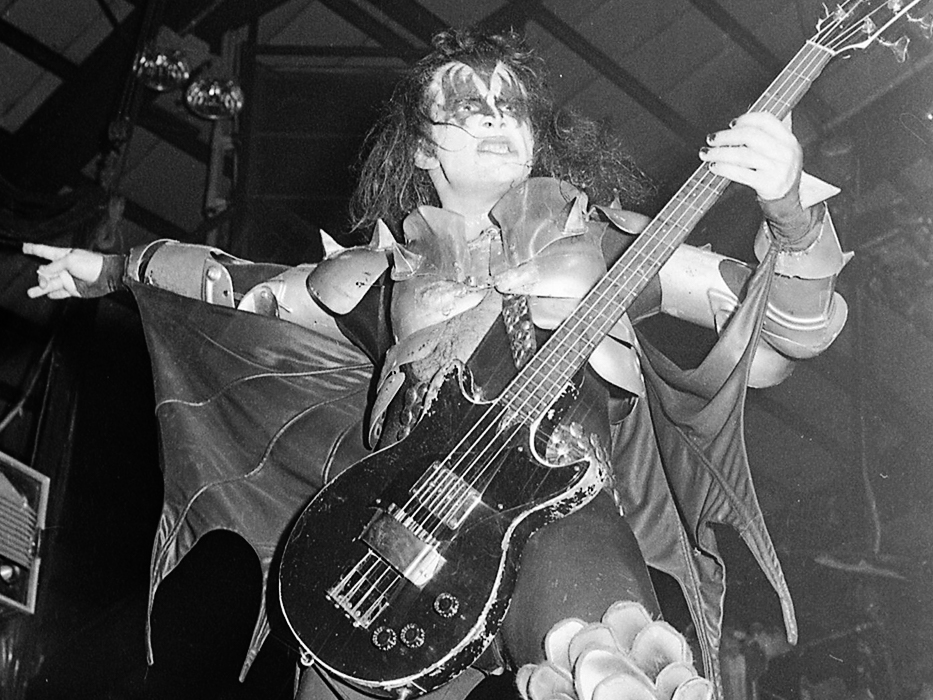
It probably hasn't escaped anyone's eye that the LoBue was suffering some major damage from having to "wrestle" with Gene's armor outfit every night. The upper horn had had the finish stripped off and was showing more bare wood for every show and the back of the neck also looked more than a little worse for the wear. There was also serious wear on the neck towards the nut as you can see in the photo from Tulsa below.
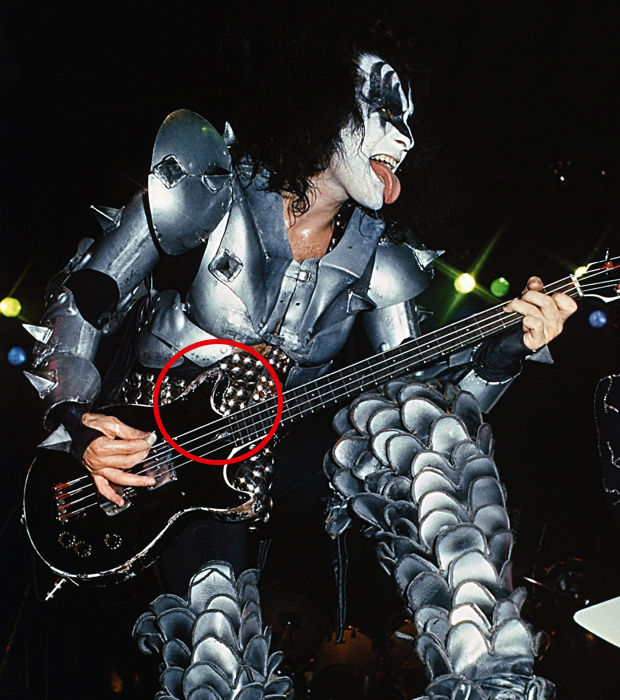
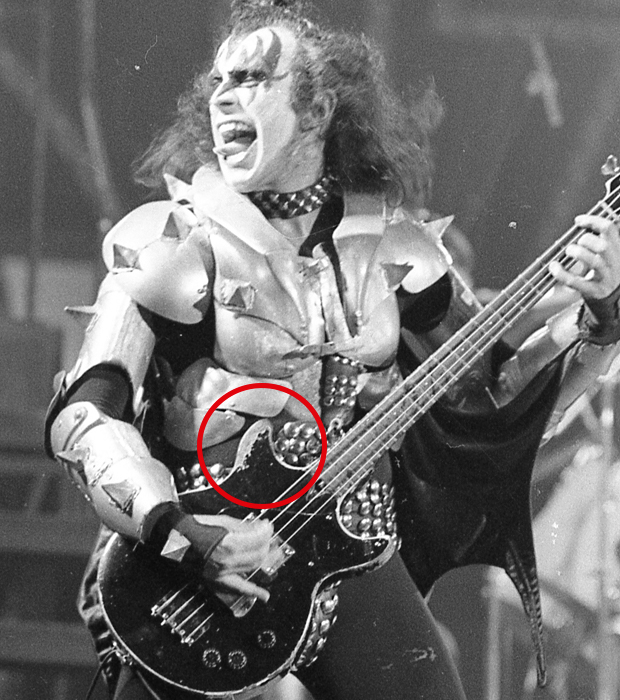
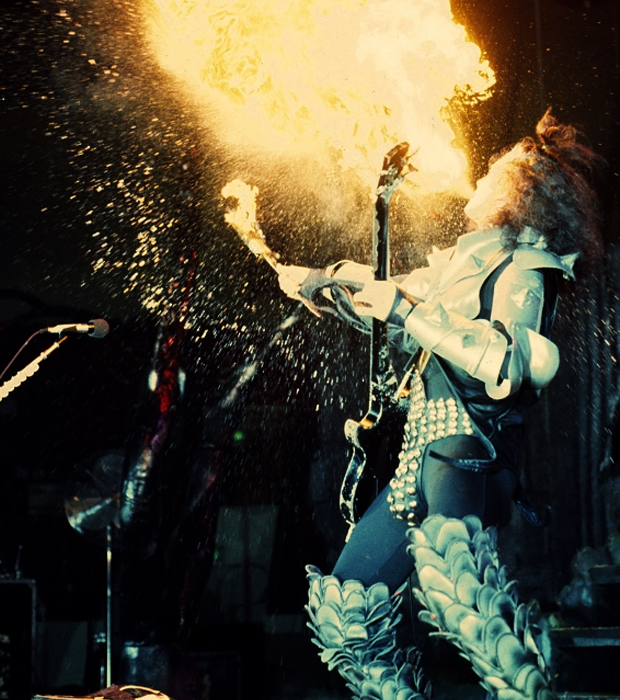
It was probably too much work to do something about the wear on the neck, Gene wasn't about to be without his trusted number one in the middle of a tour if he could help it. But the many body blows could probably be lessened slightly. Thus the LoBue ended up with a leather cover for the upper part of the body that was covered in studs on the front: mkVIII. It first appeared in Chicago as seen below.
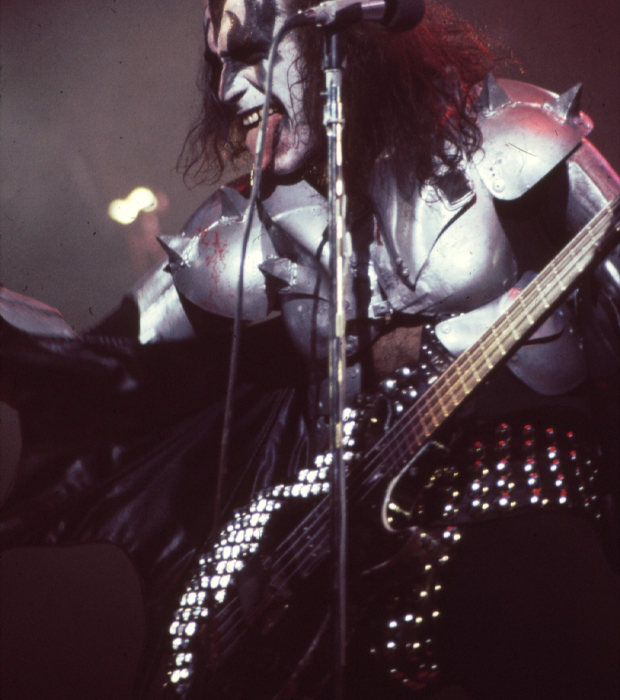
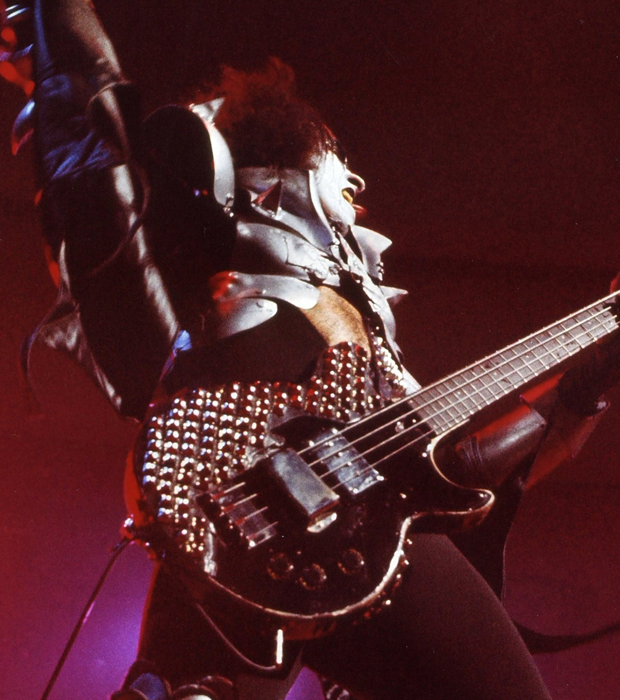
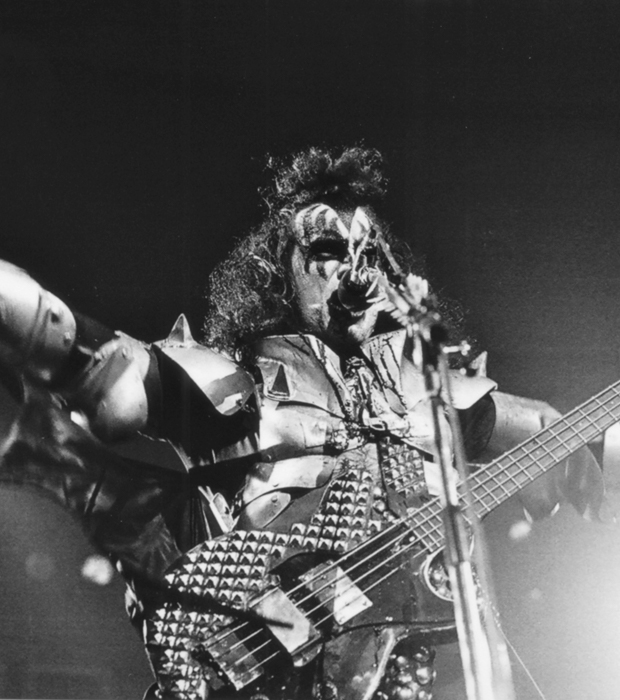
There would be just one small tweak to the mkVIII look. In early March two strips of tape were added to keep the cover somewhat secured to the front of the body. (Originally there was only one strip of tape placed right behind the tailpiece, also seen in the Terrance Bert photo above.)
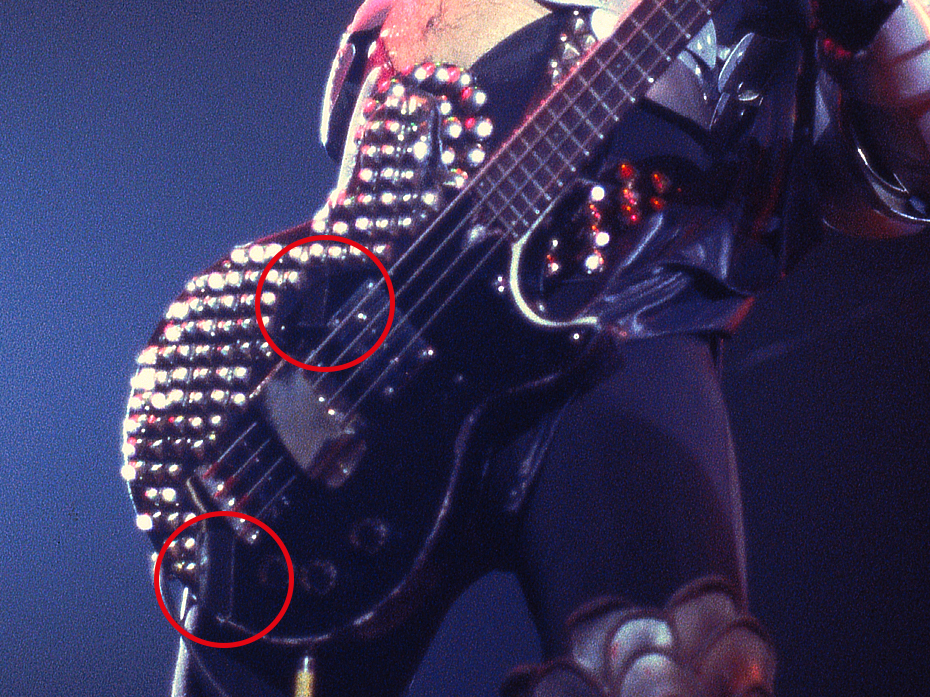
Even though Gene acquired the new darling Spector in the summer of 1977, the LoBue was initially part of the instrument lineup when the CanAm Tour in support of Love Gun started. Gene also traveled with the Dan Armstrong during this early part of the tour and that was the bass that was most often stood on Gene's side of the stage in the backup role. The LoBue was brought out for the blood-spitting routine but it was also on Gene's side of the stage (at least once). It is only there for a scant few shows though and then it seems to disappear.
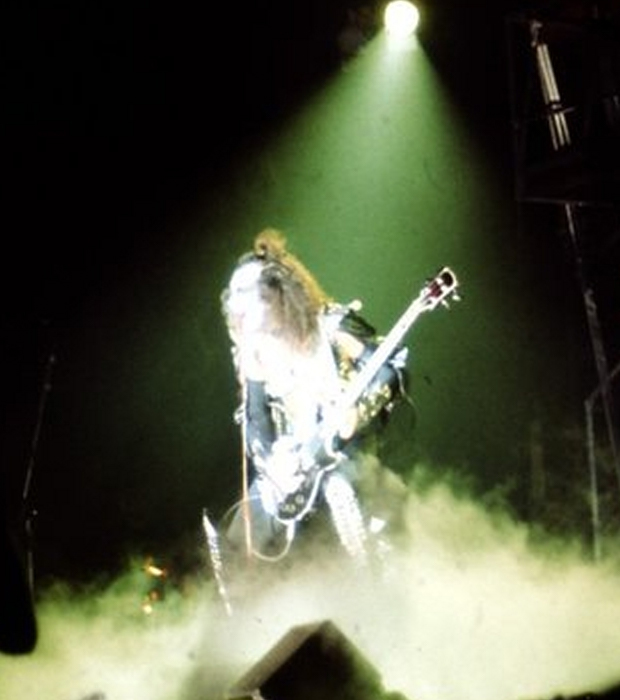
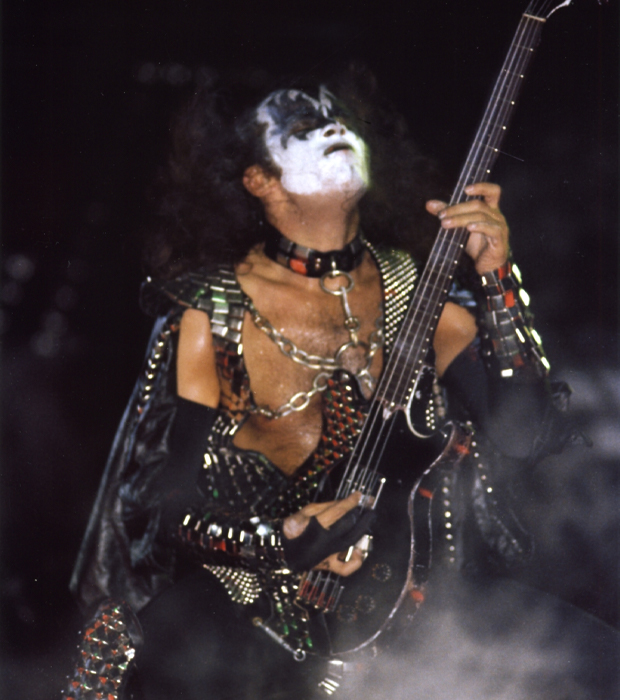
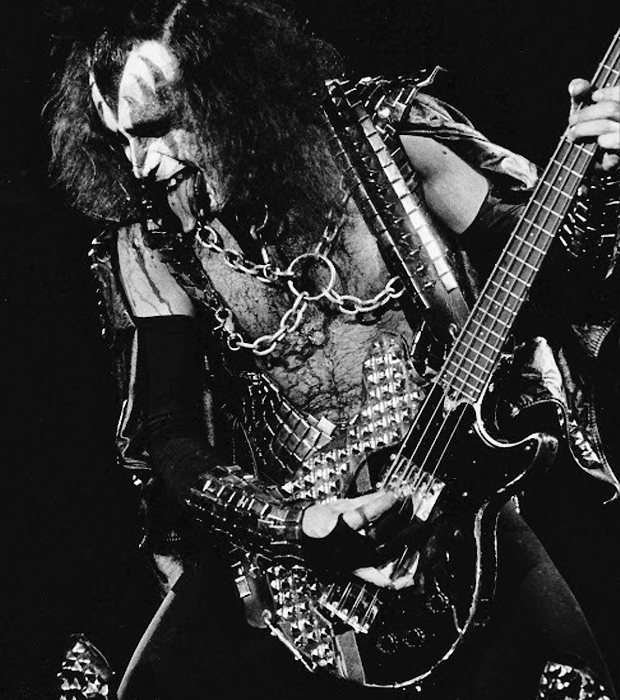
And about the LoBue disappearing... Gene has been prone to favor "ripping yarns" over the actual truth and his stories often change drastically over time. Let's look at the printed recollections first. In the 1979 Guitar Player interview Gene said the following:
"[I used that bass] For about four years, until one night I threw it to my roadie. At the end of our show [I] walk offstage and I throw the guitar off the stage, and everyone gasps. That one night he dropped it and the neck broke in half." (Guitar Player February 1979, p. )
Twenty years later when the band were at the beginning of their new-found success with the Reunion he told this story:
"A couple of years later I lent it to Micki Free, whose band Smokehouse opened for us once, and never saw it again." (Metal Edge Presents KISS Alive! 1996, p. )
Spiro Papadatos of tribute band, GHS strings ad, and That 70s Show fame has mentioned that Gene told him the LoBue was stolen while being away for repairs after Gene "fell off the front of the stage". And as late as 2013 in an interview at G-Club in Tokyo Gene threw another wrinkle to the story of the LoBue's demise, this time suggesting that he used the bass on stage in 1982 (!) when he fell off the front of the stage, cracked the neck and promptly gave the pieces to a member of the audience.
The only one of these stories that have been verified by anyone other than the Demon himself is the one about Micki Free. KISS fan Jack Williamson asked Free point blank about the matter and was told that it was true that Gene lent him the bass and that it was subsequently stolen while in his possession. Unfortunately that means that the whereabouts of one of the most storied basses in KISStory is unknown.